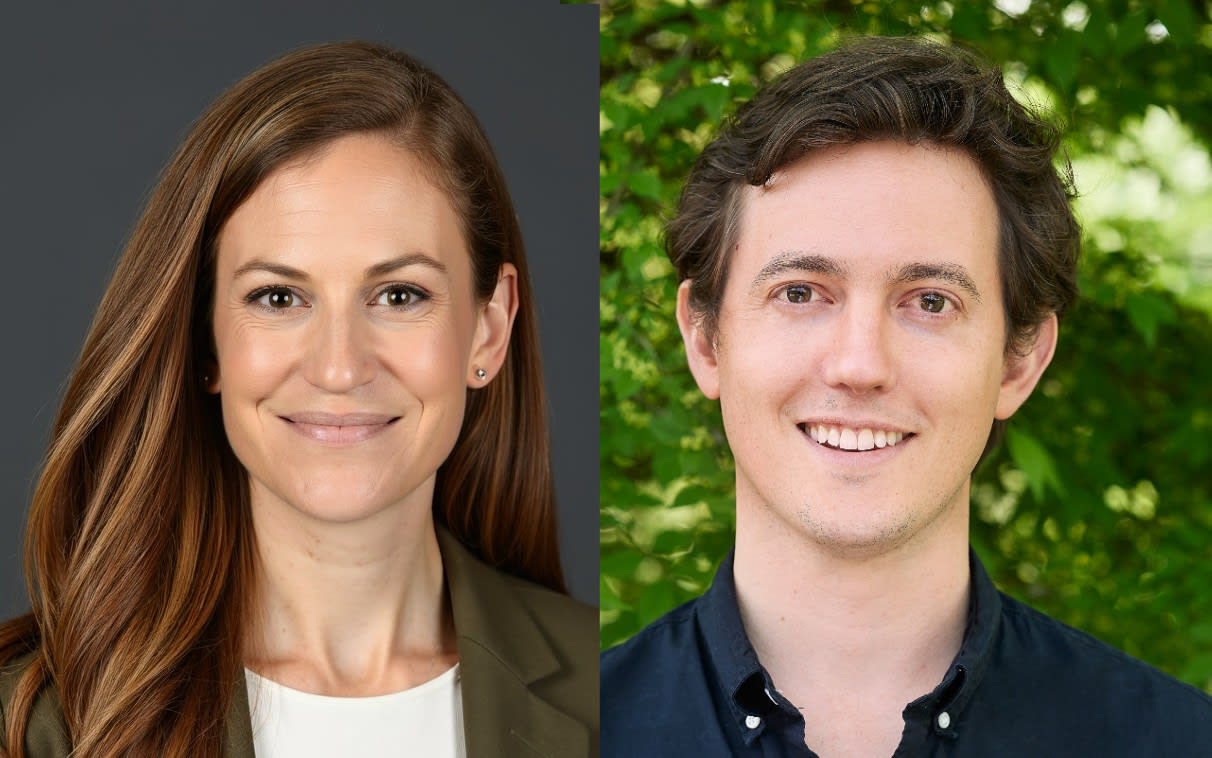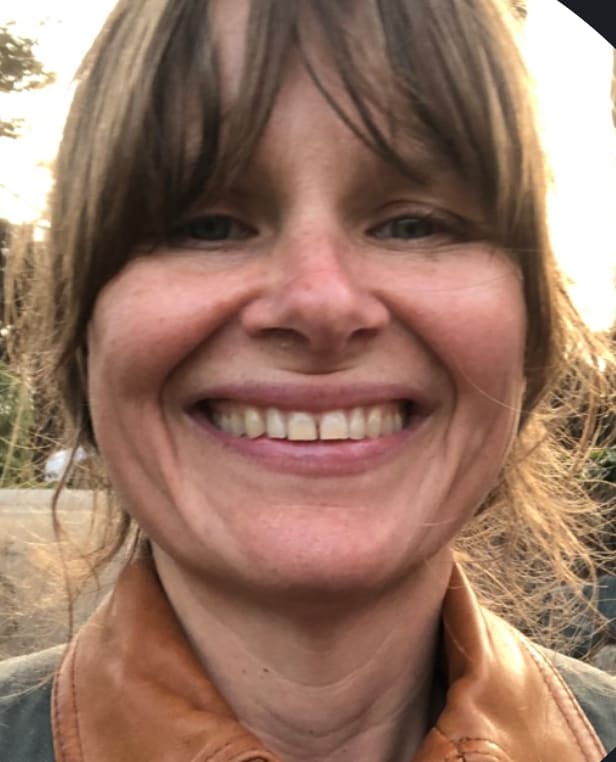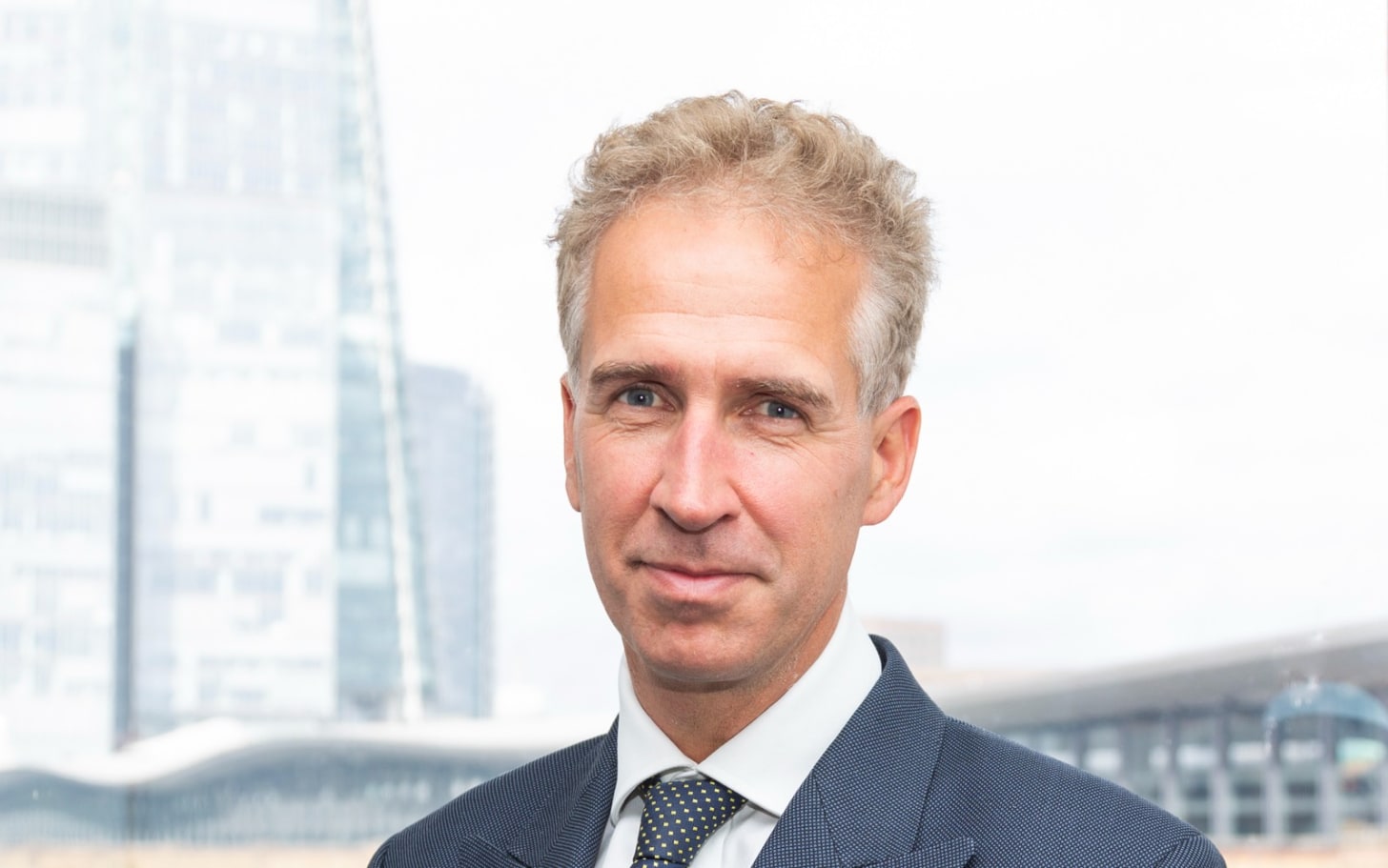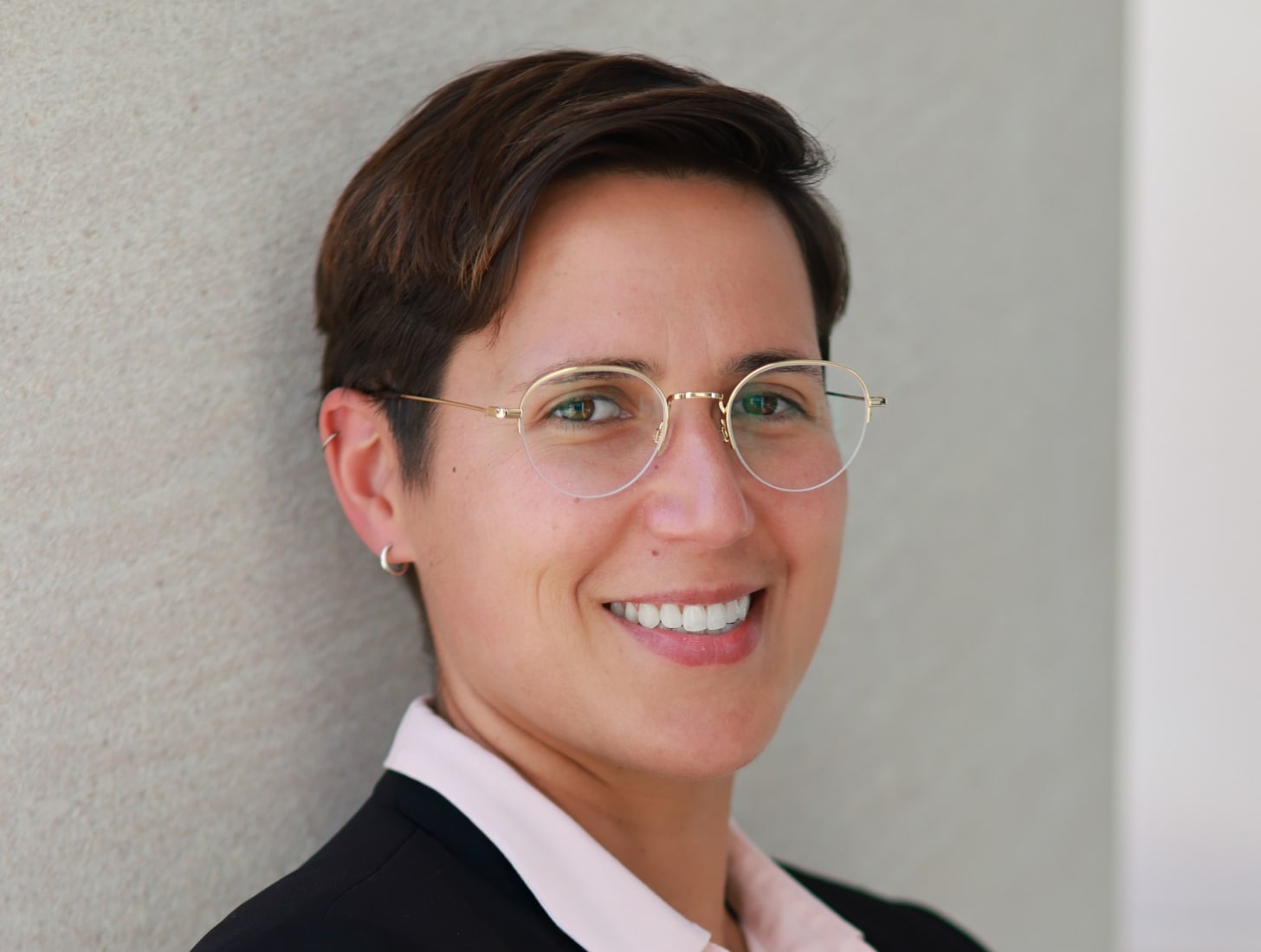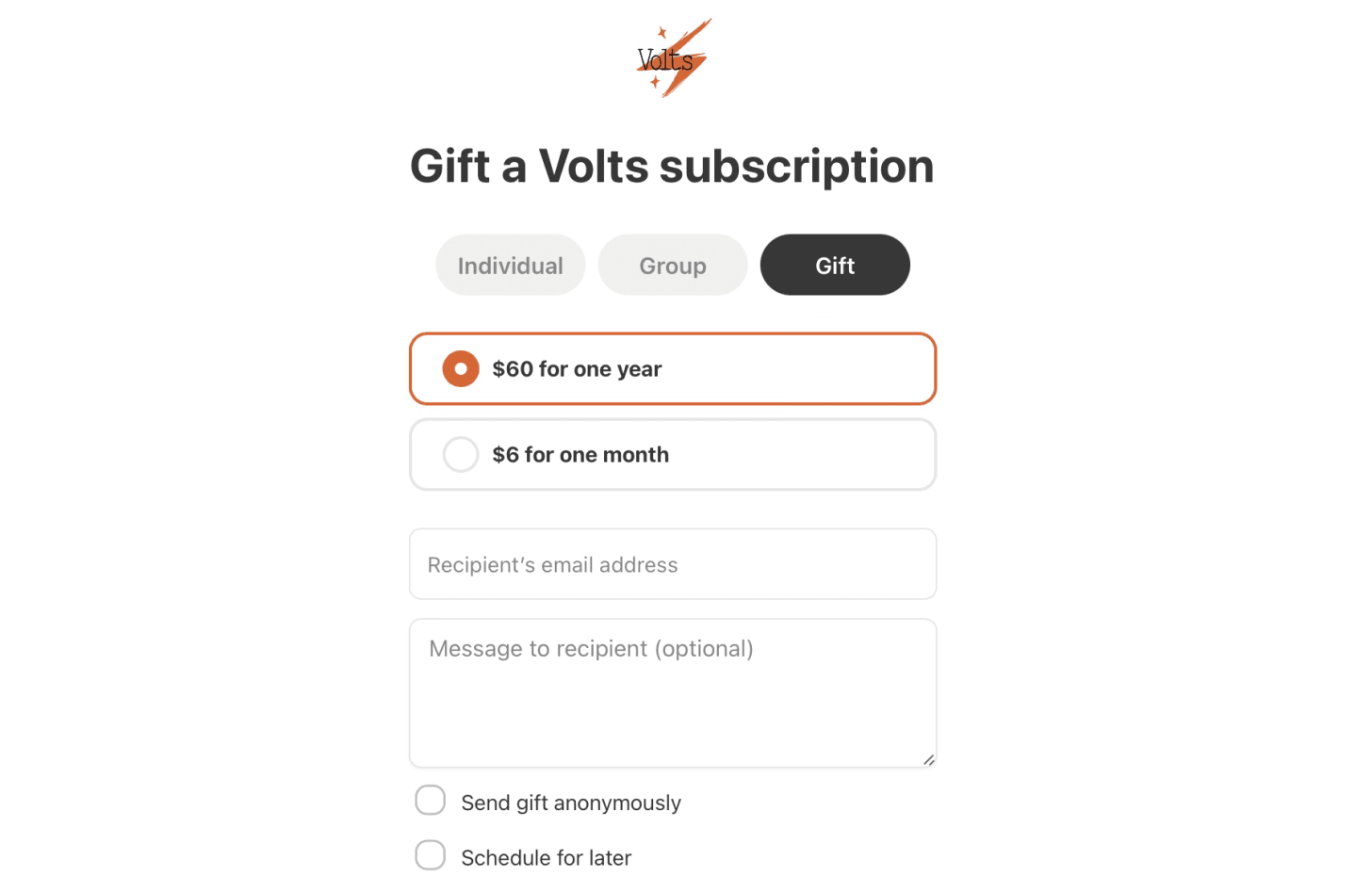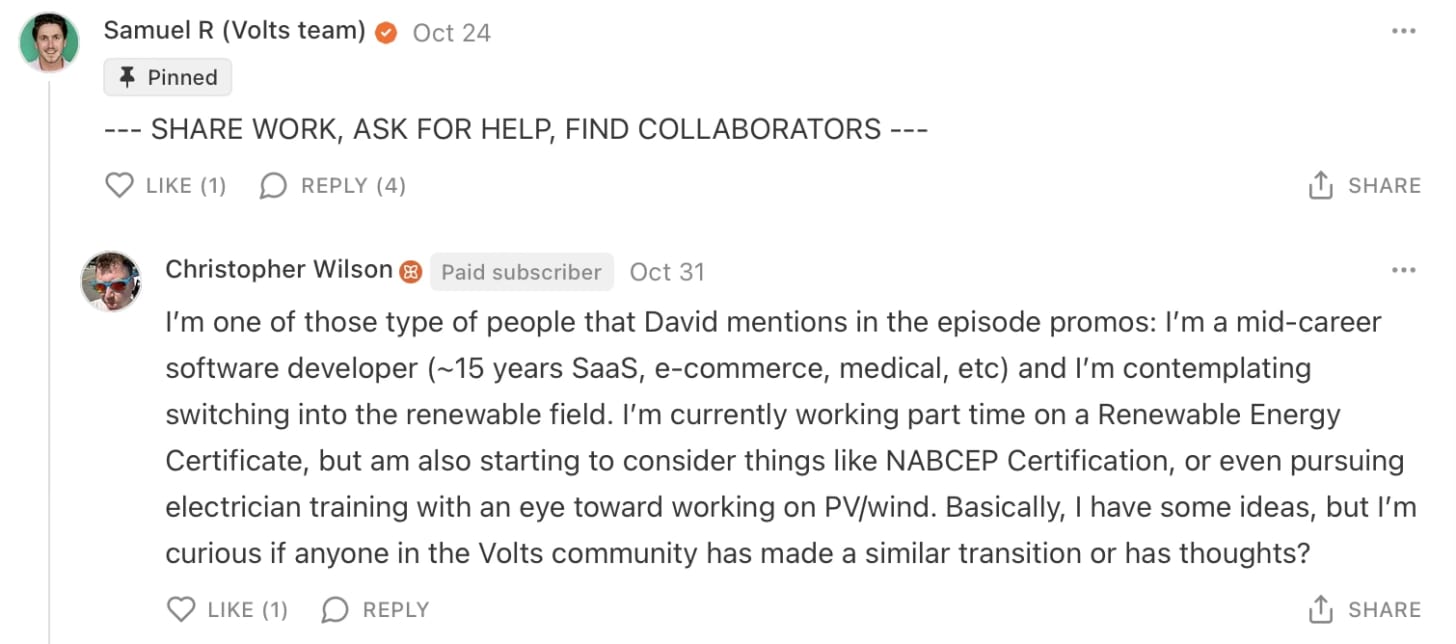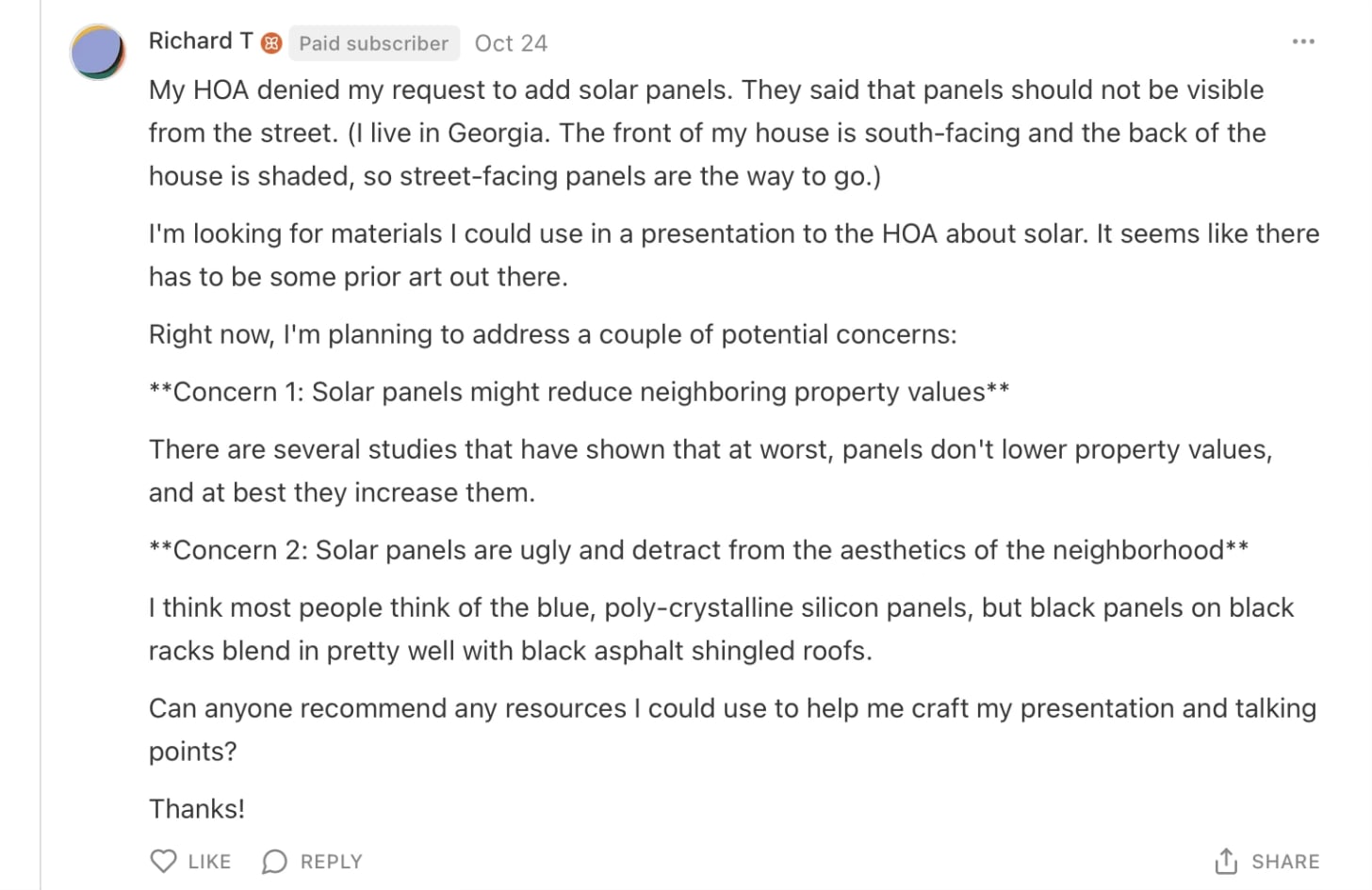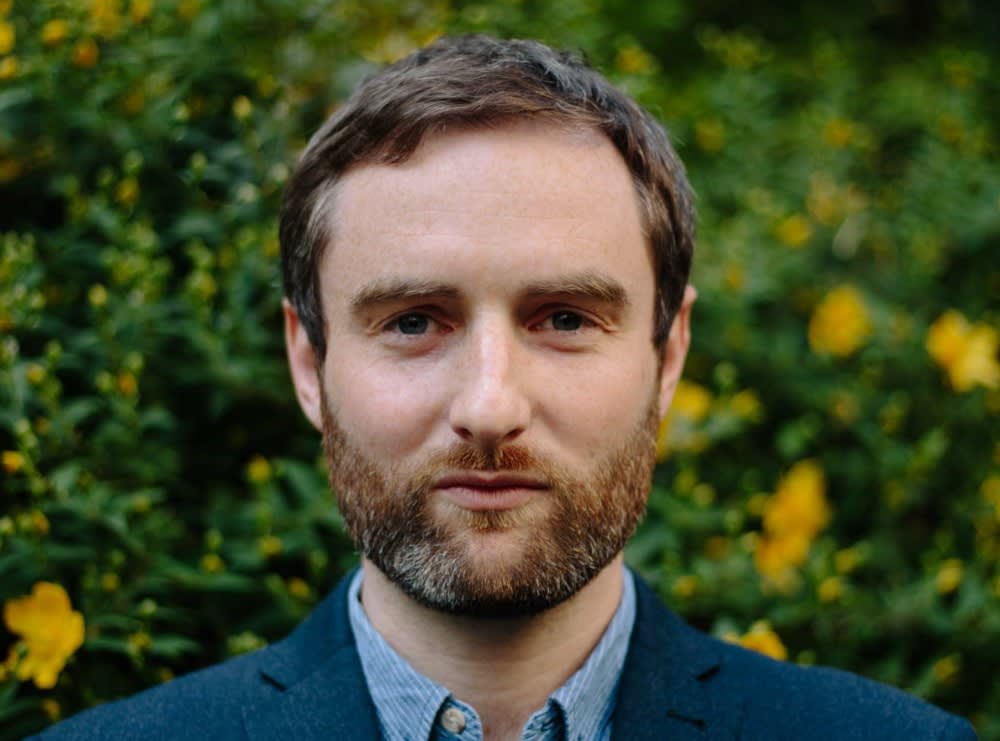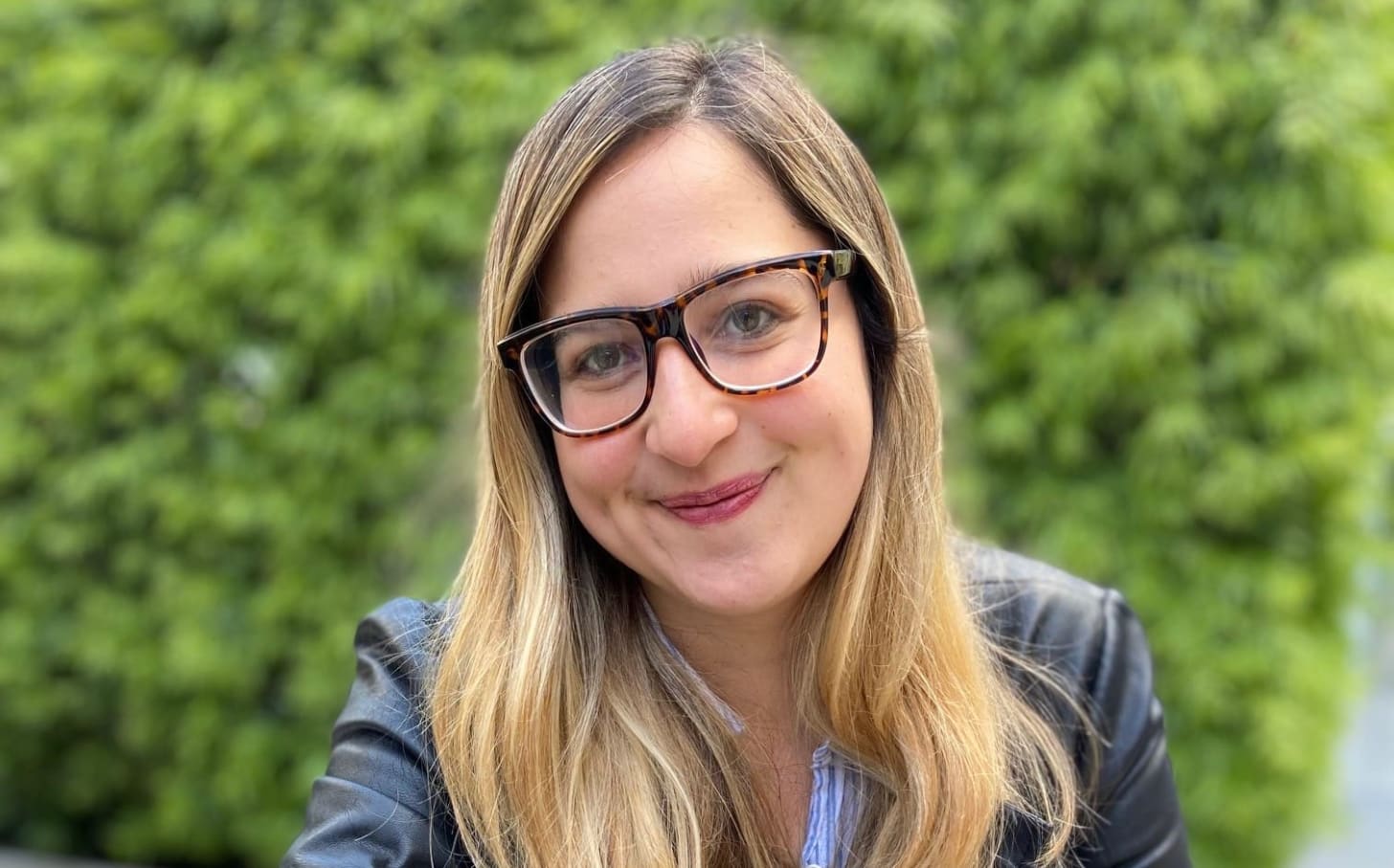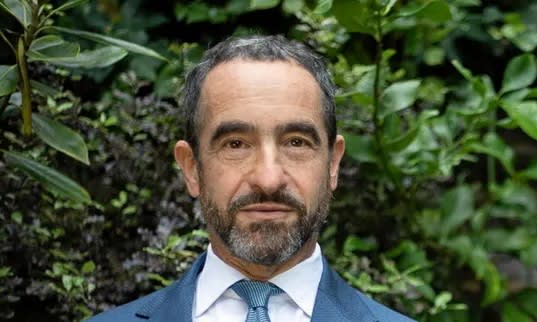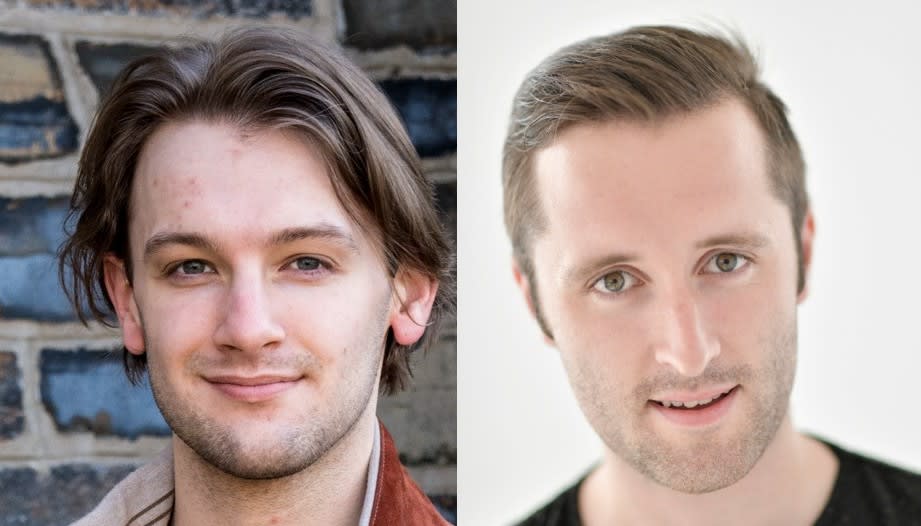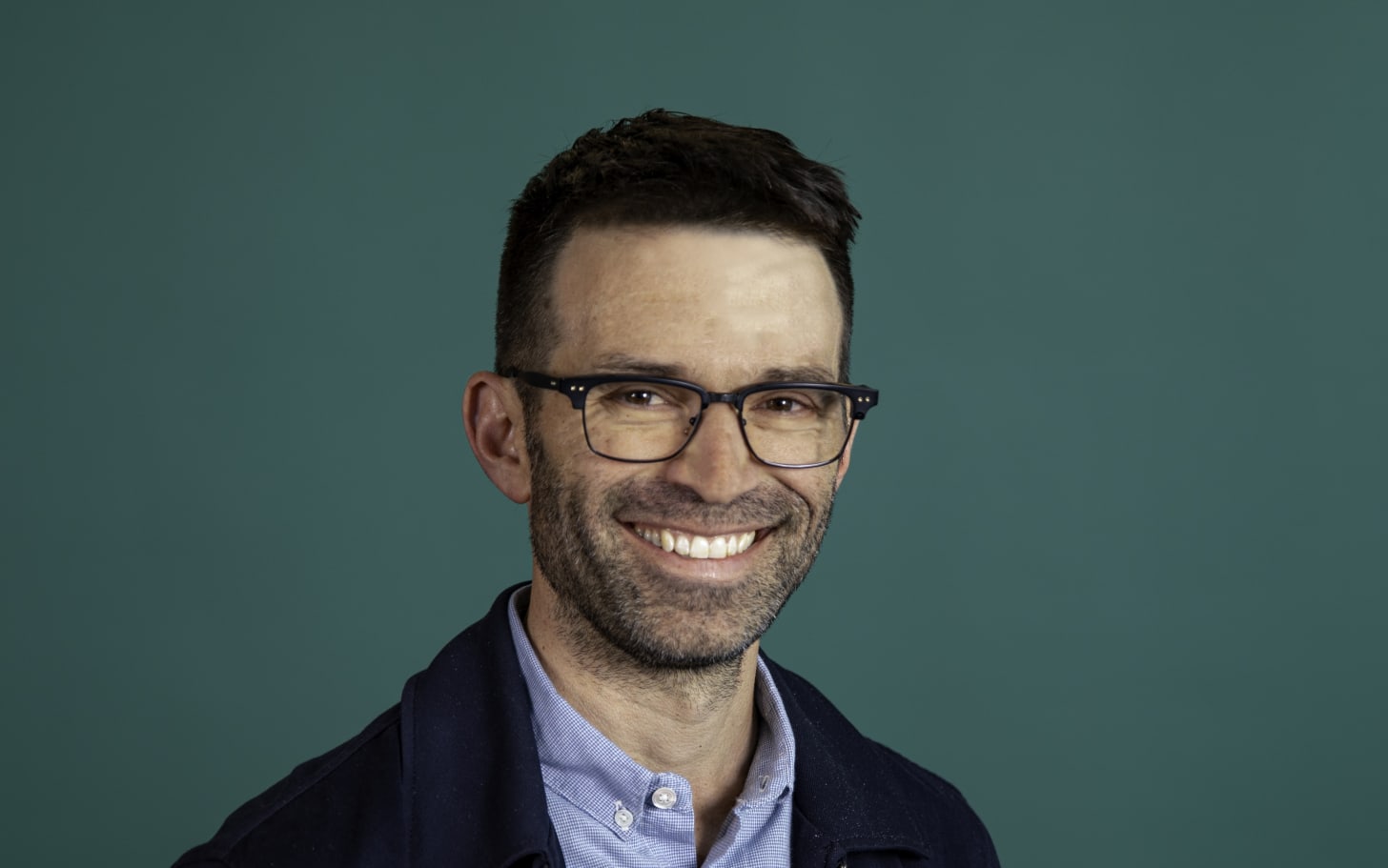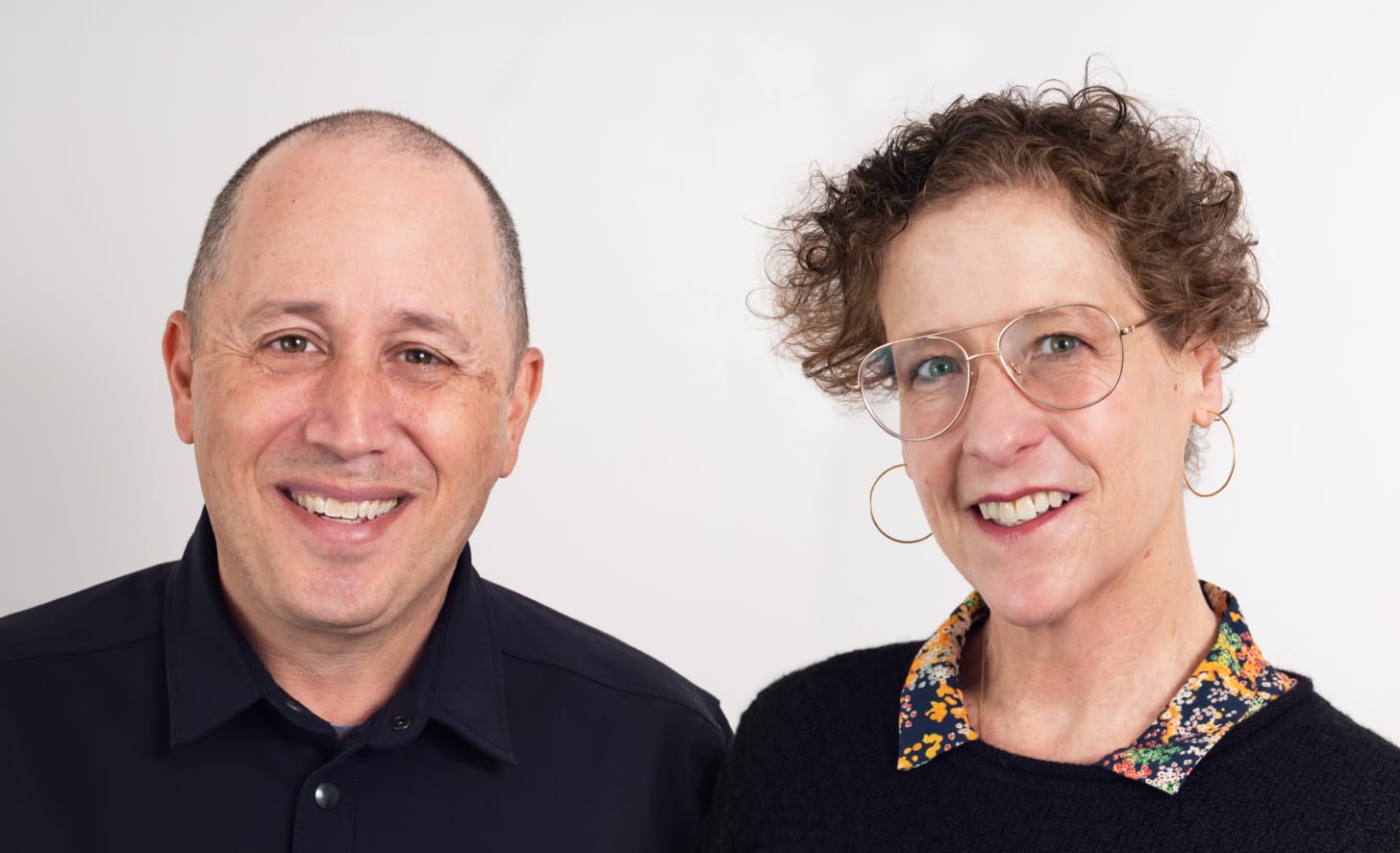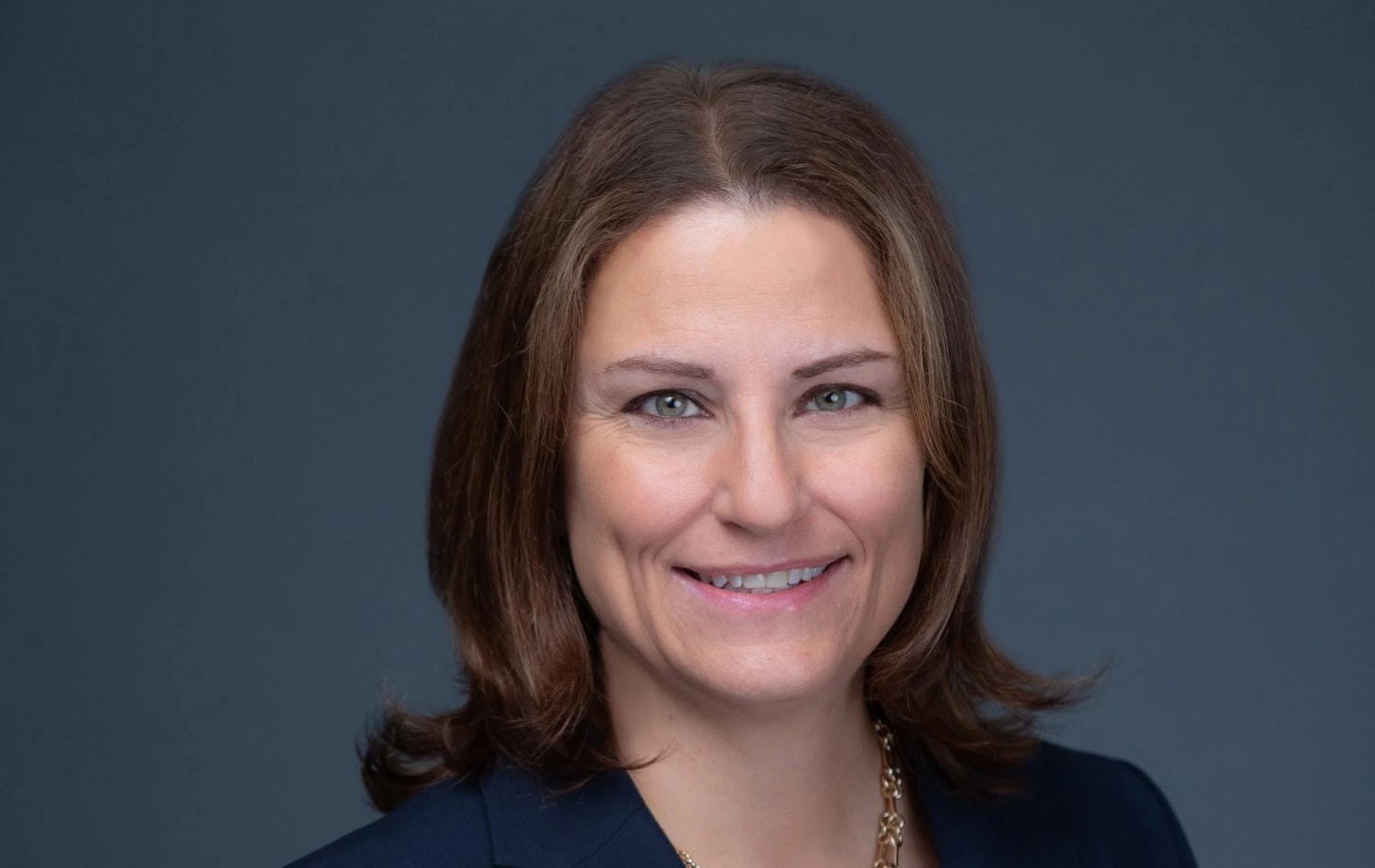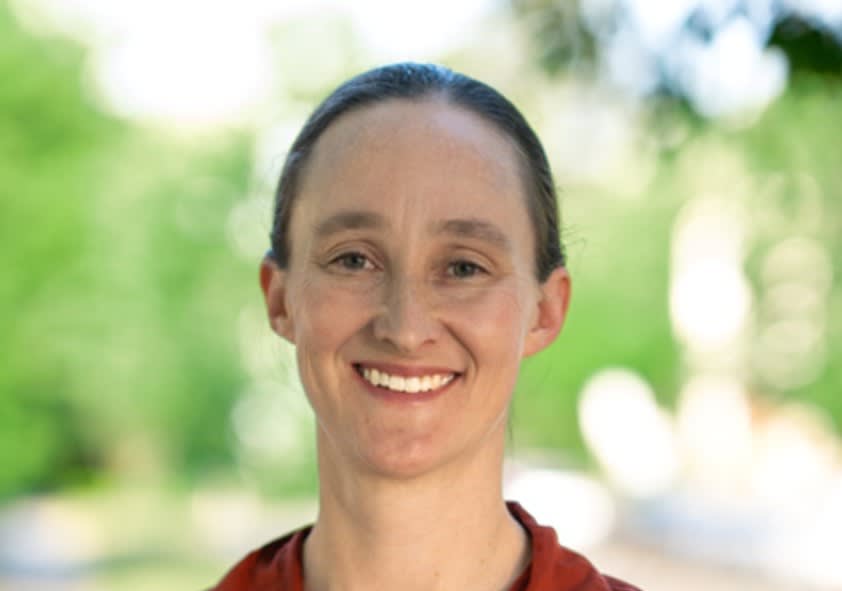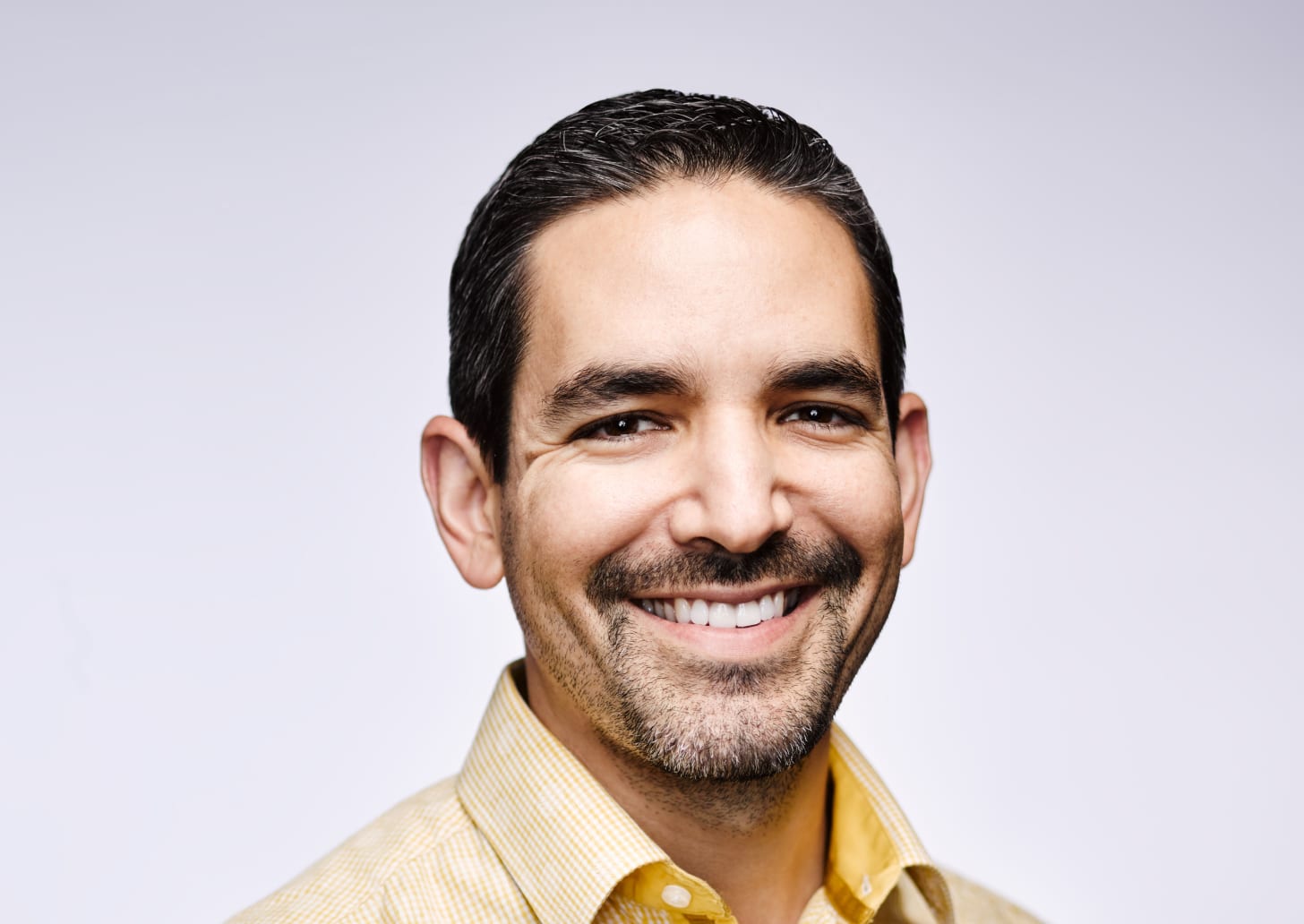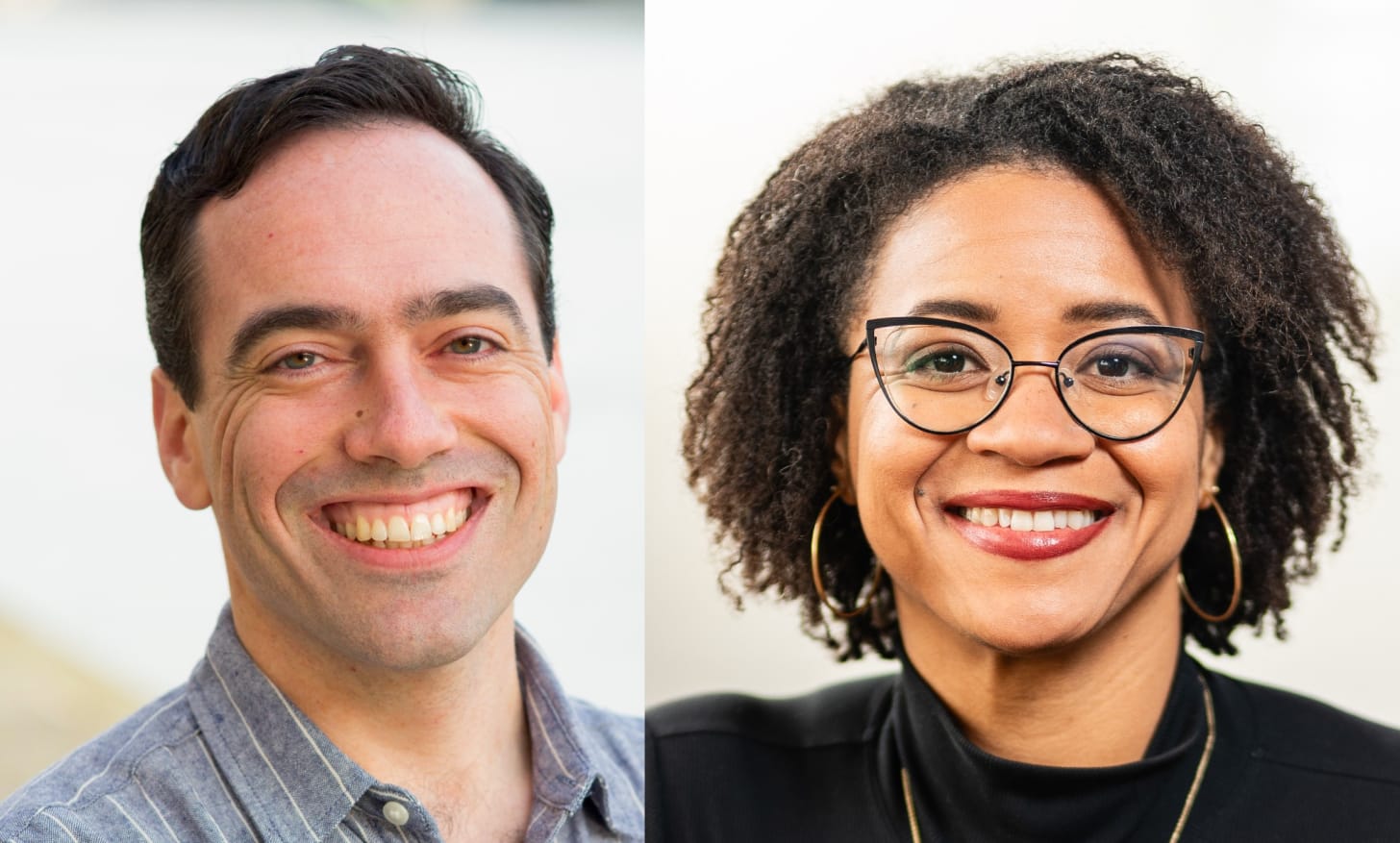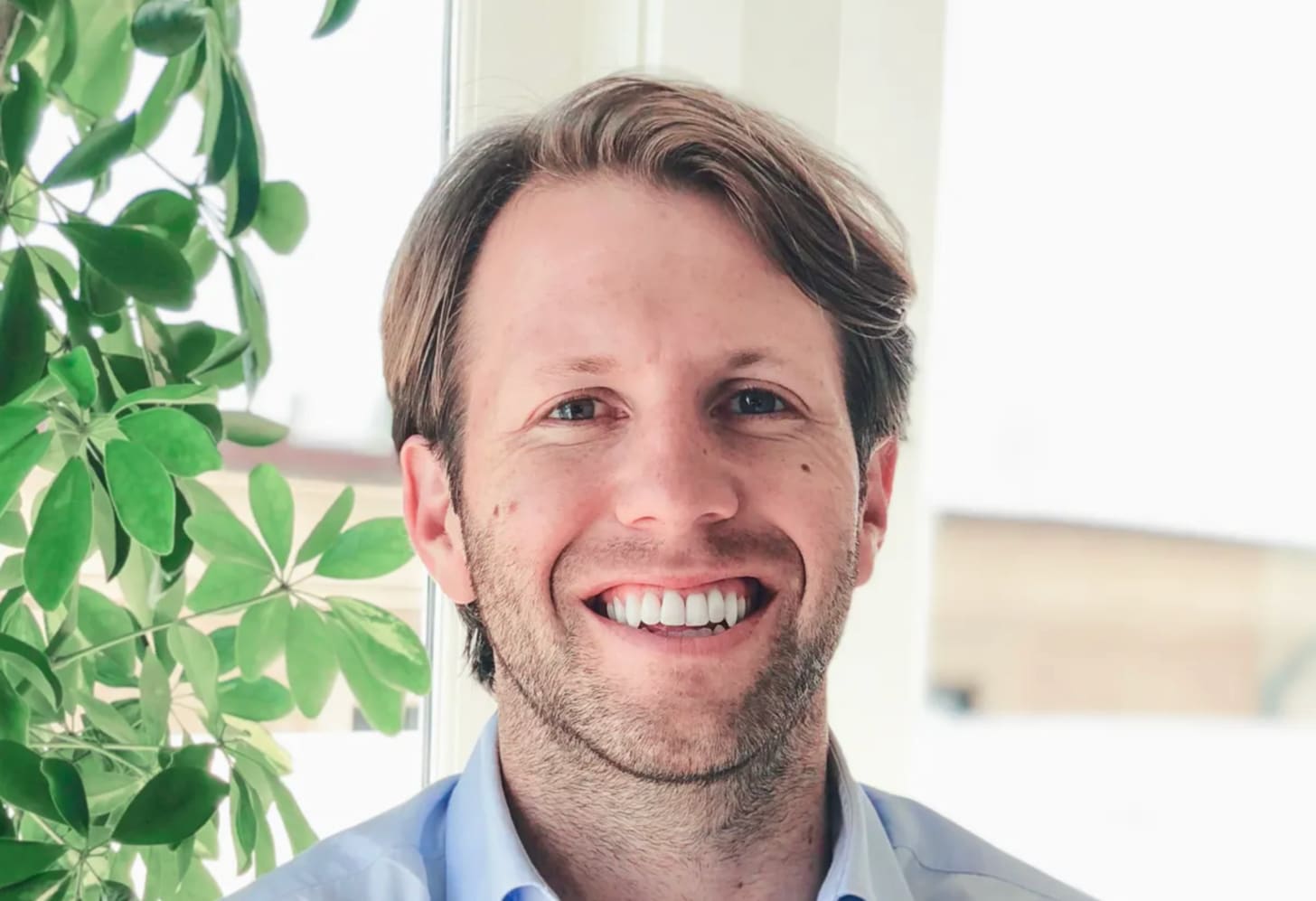How Illinois passed its third big clean-energy bill in a decade
Why is a deregulated state like Illinois suddenly embracing central planning? In this episode, I talk with Kady McFadden and John Delurey about the state’s decision to empower its utility commission to directly procure clean energy. We discuss why capacity markets are too slow for the current environment and their strategy of aggressively framing renewables and storage not just as green, but as the only “fast and cheap” way to protect ratepayers from price spikes.
(PDF transcript)
(Active transcript)
Text transcript:
David Roberts
Hello, everyone. Greetings. This is Volts for December 3, 2025 “How Illinois passed its third big clean-energy bill in a decade.” I’m your host, David Roberts.
Toward the end of 2016, Illinois’ Democratic legislature passed, and its Republican governor signed, a sweeping, comprehensive energy bill called the Future Energy Jobs Act (FEJA). It repaired the state’s renewable energy program and kept some old nuclear plants open. I wrote a big piece about it for Vox.
In 2018, Illinois achieved a Democratic trifecta with the election of Governor JB Pritzker. In 2021 came another, even more sweeping, comprehensive energy bill, called the Climate and Equitable Jobs Act (CEJA). It committed the state to net-zero emissions and scheduled the retirement of several fossil fuel plants, among many other things. I wrote a long piece about it here at Volts, back when I was still writing (sigh).
And now, here they go again. Just last month, Illinois Democrats, who now boast a legislative supermajority, passed another sweeping, comprehensive energy bill called the Clean and Reliable Grid Affordability Act (CRGA). It is many, many things — it clocks in at over 1,000 pages — but for the most part, it is focused on the electricity system. The grid. I love talking about the grid!
So I am super excited to have with me today the two people who, outside the Illinois legislature itself, arguably had the biggest role in getting this bill conceived, written, pushed for, and passed. Kady McFadden is a long-time organizer, advocate, strategist, and lobbyist in the state — she was a force behind CEJA as well — who now runs her own shop, McFadden Strategies. John Delurey runs legislative and regulatory work for the advocacy group Vote Solar and is a certified Chicago guy, so he has taken a special interest in Illinois legislation. We are going to talk all about it!
With no further ado: Kady McFadden, John Delurey, welcome to Volts. Thank you so much for coming.
Kady McFadden
Thanks for having us.
John Delurey
Yeah, it’s great to be here.
David Roberts
John, last time I saw you was about a year ago in Chicago, and you were in it. You were head down in the thick of things. What a difference a year makes. Maybe I’ll just start with you for a little history. Let’s start back when CEJA passed. That was 2021. How have things developed since CEJA? And what was the origin of this bill? This bill is now being framed as a response to Trump nuking federal policy, and as a response to the spike in electricity bills, which we’re going to talk about in a minute. But I’m wondering, was it a seed in your head before that?
Just run us through the post-CEJA energy world in Illinois.
John Delurey
Yeah. Thanks again, David. Thanks for having us. So CEJA was just shy of 1,000 pages. You mentioned in the intro that we finally broke that thousand-page threshold.
David Roberts
Good. Congrats, guys. Way to go.
John Delurey
Thank you. That’s the most important metric of all. But CEJA was transformational. It set the groundwork for all things utility: accountability, for drastically improving and fine-tuning our renewable portfolio standard, unleashed a bunch of new money to deploy renewables, and also sort of put a foot in the door for energy storage, especially for small-scale energy storage. And ultimately, that led to pretty tremendous success. So I think when you combine FEJA and CEJA, now we’ve had about 8.6 gigawatts of utility-scale wind and solar, and then 3.3 gigawatts of just local solar. So think community solar, rooftop solar procured just in the last eight years or so.
David Roberts
And there’s clearly been, like, I don’t know what the polling is or anything, but at the very least, there’s obviously been no big voter backlash. I mean, voters seem to like it. They keep re-electing the same people.
John Delurey
That was part of the secret sauce of CEJA: that we built into every page of that bill programs that made sure that these benefits felt local. So, community solar was heavily incentivized, but as was the Illinois Solar for All program, to ensure that income-qualified customers also had access. We broke out new subprograms on community-driven community solar. And these were all added complications in the moment and not without their own controversy, but it did build social license. It helped us invest in that political future to ensure that we could keep this conversation going.
And so a lot of that success has now turned into a pretty robust fleet. We’ve got 1.1 gigs of distributed generation already energized in Illinois, but it wasn’t necessarily deployed to its full effect. And so once we started to see the affordability crisis not just looming on the horizon, but very real and very present, especially at least initially in downstate Illinois, I think we’ll talk a lot about affordability over the course of our time together.
David Roberts
We’ll get to it.
John Delurey
But there was this real inflection point where downstate Illinois families were paying $52 more per month because of capacity prices—just capacity. This was just from MISO sort of spiking back in 2022. And so that was the impetus: that it was time to go back to the drawing board. CEJA set a tremendous foundation, but we had to start fine-tuning a few things.
David Roberts
So the goal then was boosting distributed energy and addressing affordability, which are, as we here know, often the same thing. Those are sort of the twin impetuses. Impeti? I don’t know. I’ll have to Google that later. So prices are spiking in Illinois.
Little background: there are two big utilities, big investor-owned utilities in Illinois. It’s ComEd and Ameren. I think bills are going up on both ends, especially ComEd bills. This is interesting. So Kady, you know, I’ve been reading around about bills rising in Illinois and who people blame. And it’s pretty amusing just to go briefly down a list. So the Republicans blame CEJA, naturally. They’re blaming all the new renewable energy and, particularly—and we’ll return to this later—they’re blaming the retirement of those fossil fuel plants that CEJA created.
Then there are some people who blame the grid operators, PJM and MISO. So Illinois is sort of like half in one and half in the other. So it’s partially under PJM and MISO, the big market areas, trading areas. Some people blame mismanagement at the grid at that level. Then there are consumer groups I think are blaming data centers. There’s a lot of data centers coming on in Illinois. It’s a big issue there. Big manufacturing and procedural issues in the way of renewables. Basically, it looks like whichever explanation you want for rising prices, you can just shop around for the one you want. So I guess my first question to you is: In your mind, substantively, why are electricity prices rising?
Kady McFadden
Well, there’s plenty of places to place blame. And in crafting state legislation, we really wanted to keep in mind what levers do state policymakers have control over of the numerous. One, you know, we can talk about PJM and MISO, we can talk about data centers. You know, a lot of truth is in a number of these factors. But at the end of the day, what we are solving for is bills are going up. This is the most salient political issue right now. We were hearing from legislators knocking on doors, collecting petition signatures, saying everybody’s talking to me about their electricity bills going up and, you know, what menu could we give them, what suite of policies could we put together for legislators to be able to be the hero in this situation? Knowing that state policymakers can only do so much with the numerous factors that you named. And maybe it could be a good time for just a little, like you said, a few of these things. But Illinois 101, right? Like, we’ve been a restructured energy market since 1997.
David Roberts
That’s going to come up later, too.
Kady McFadden
Okay, great. So we’re split between PJM and MISO, so we have to take both of those into effect when crafting state laws. And one other thing, as the lobbyist here, that I have to name is, I could imagine your listeners could listen, say, oh, you know, big whoop, like, blue state passes another climate law with a climate governor and supermajorities in the House and Senate. But Illinois is a major polluter, right? I mean, we’re the seventh-largest polluter in the country. We mine coal. You know, we have cities like Coal City and Carbondale in this state.
You know, Prairie State Energy Campus, when it was built, was the largest CO2 emitter in the country that had been built in 25 years. So, you know, yet our politics do mirror the country, right? So we have downstate Democrats, we have suburban Democrats, we have a lot of city folks, we have our legislature because, you know, we do have a supermajority of Democrats, but are broken into so many caucuses: Black caucus, Latino caucus, moderate caucus. I could go on. And so our policies, knowing that we’re crafting, also have a pretty high bar that they have to meet because they have to work for all those caucuses.
David Roberts
Yeah, I mean, I think you’re making a really good point, which is good background, which is actually, you know, not to blow smoke up your respective butts, but like, one of the things that impressed me about the two previous Illinois bills is that while it’s true that the Republican Party didn’t play a very big role in either of them, it is nonetheless impressive as a small-d democratic feat, both of them. In that you are wrangling lots of very distinct caucuses and interest groups. Like, it’s a very diverse and fractured environment, even though it is sort of majority Democratic and in the sort of old, you know, just simple polarization way, it’s blue. There’s still lots of different interest groups within the blue. So this is not easy. There’s still a lot of cat herding, big time.
Kady McFadden
Well, my point in saying we’re the, you know, seventh largest polluter is, you know, the fossil fuel industry is alive and well in the state and therefore in the state capitol. And this bill, “SERGA,” is what we like to call it, by the way.
David Roberts
Oh, “SERGA,” not “KERGA.”
Kady McFadden
Yeah. You see what we did there?
David Roberts
Yeah. Better. Much better.
Kady McFadden
But this, you know, CRGA, it overhauls how we do energy policy in the state. And I know we’re going to get into the details here, but you know, sure, we’re a blue state. Plenty of blue states are running away from climate policy right now. But also, if you’re one of those fossil fuel operators in the state, you might not like a lot of the pieces of this. And as a lobbyist, I could tell you like six different ways they could try to throw, you know, sand in the gears here. And they did, right. And we were able to overcome all of that.
David Roberts
I guess the reason I asked about electricity rates in the first place is part of what’s going to inform policy is what is actually causing prices to go up. But also part of what informs the politics is just why do people think prices are going up? And this is like, as you both know, this is a national issue this year, next year, and all these elections. So the elections that just took place, the elections that are coming up in 2026, energy affordability looms big. And you guys are in touch with Democratic circles. All the Democrats are exercised about this, all the Democratic consultants are worked up about this.
So part of, to me, sort of the background mystery is just like, what does the public think about this? So do we have any, do you have any sense, is there any polling or survey data or do we know anything about why the public thinks this is happening? Because they could. Like when I think about it, trying to think about it from a normie point of view, like there are utilities, there are data centers, there are legislators. You know what I mean? There are meddlesome green groups, like you could pick your enemy out of a wide array. I’m just wondering, do we know what the public thinks about why this is happening?
Kady McFadden
You know, I saw some polling from Potential Energy just maybe last week that showed 75% of Americans believe we’re in a cost of living crisis right now. And what blew me away, even as you know, having just been fresh off lobbying on this exact issue, but does actually square with what legislators were saying. However, they’re, I would say, more informed on energy policy these days because this was in the limelight. At least I get to speak for Illinois. The polling showed 53% believed that clean energy was the same or cheaper than fossil fuels. And more than half believed that the cheaper option to our energy problem is more solar rather than fossil. And I’m actually surprised how much I, you know, we had to make this case to legislators while we were lobbying on this bill, but they got it once we started explaining what was happening.
David Roberts
I’m a little surprised too, because honestly, like you pass two big energy bills and then prices go up, it’s a real easy story for your opponents to tell, right? Like it’s very easy to ride in here and just say, look, they did all this clean energy stuff, and then prices went up. That’s why.
Kady McFadden
But the problem this summer was so clearly from the capacity market, right? So then our problem was explaining how the heck a capacity market auction works to over 100 legislators, which we did. But you know, the fact that so much of that was beyond our control, yet we could get creative with policy levers in the state was kind of the pitch.
David Roberts
Yeah, yeah, yeah. Okay. So that’s a little context. So let’s jump into the bill. It is a lot. There is a lot to it. So I’m going to try to kind of pick out—we might have to sort of shift into speed round mode toward the end of here—but I’ve at least picked out a few big things to start with. So, John, I want to start with you about this. What I see as one of the most interesting intellectually and politically interesting things underneath all this, which is this whole idea of integrated resource planning.
So you know, Volts listeners know that the country is split up into old school, you know, vertically integrated monopoly utilities who run everything, plan everything, etc.—your Southern Power, your Alabama Power, etc.—and what are called deregulated or restructured markets where retail and wholesale are split up, and Illinois is restructured, which means you’re part of two separate markets, PJM and MISO.
So you’re sort of part of PJM planning and sort of part of MISO planning. But each of the individual utilities, generation utilities, and distribution utilities in the state are just planning for their own little thing, which is just a long-winded way of saying that in a restructured state there is no longer any central planner. There’s no planning anymore.
And that was originally kind of, I think, was part of the pitch, I think, of deregulation is just that, like, unleash market forces and good things will happen and nobody needs to plan it centrally. So what it seems to me has happened here is a classic restructured state is saying explicitly: that didn’t work. That’s not like—deregulation did not work. We need central planning. And so this bill sets up a process whereby Illinois can plan itself. So I’m just curious, just on a sort of almost background intellectual level, do you think this is a sign that the tides are turning against deregulation and restructuring, or do you see this as like fine-tuning restructuring? Do you know what I mean?
John Delurey
Yeah, it’s a great question. I think we’re aiming for the best of both worlds. I think that legislators, after a lot of conversations that Kady had down in the Capitol, came to realize that the only way out is through, that we weren’t going to backtrack to gas and coal, that that wasn’t the solution. And so what was coming next, we had to start getting a better grasp of what was on the horizon. And the policy of “close your eyes and hope the market provides” worked, right? We had really affordable, reliable energy in Illinois for a long time.
After we restructured, it is getting a little bit turbulent. A lot of that is load growth and data centers starting to pop up. Some of that is older plants in the thermal fleet starting to retire. And I will flag there that CEJA did have some decarbonization goals that were meant to start to phase out the fossil and thermal fleet, but none of those have kicked in yet. They don’t start until 2030. And so we are starting to see that energy transition require greater granularity than our current system allows. And so what we have in Illinois, because we’re not vertically integrated, because we don’t have utilities that can just get permission to build something over there where it’s perhaps most suited to load growth, we have to build out a more sophisticated set of carrots. That’s what CEJA is, right? FEJA and CEJA, our whole RPS, our portfolio, is meant to be carrots to entice the right type of development to the state.
David Roberts
Right.
John Delurey
And so what we’re trying to do through this new integrated resource plan policy is fine-tune those carrots. Does spending money now on boosting energy storage create the least-cost portfolio in 2030 or 2035? We don’t get to decide what gets built when and where, but we do get to start incentivizing the right behaviors out of the merchant fleet and out of developers that are thinking about Illinois. And that’s what it’s meant to do.
So with any luck, we will maintain some of the affordability that likely came from allowing the market to do what it does best while also starting to fine-tune the next steps of the energy transition. And I’m glad you asked about the IRP. The souvenir that I took home from the home stretch of lobbying for this bill was a flyer that the sponsor passed me. And it’s no attribution, but it’s got a big red flag and you almost think that it should have a hammer and sickle on it, and it just says, “Oppose the Integrated Resource Plan.”
David Roberts
Central Planning. That’s a bugaboo on that side going way back.
John Delurey
I just never thought that IRPs were going to be sexy enough to deserve their own oppo flyer.
David Roberts
You know that communism is looking for any way to get in the door, John. And if it has to be utility planning, that’s it. So what we have now then, as far as I know, is a first in the nation, which is a restructured state that is nonetheless doing some central planning and sort of, you know, bolstering the results of the restructuring in the name of long-term security. So a little bit of both. I wonder, is that a way station on the way to somewhere else, or do you think that’s kind of like where other states—you think other states are going to end up somewhere similar, other restructured states? I’m just so curious about how the restructuring debate ends up kind of unfolding throughout all this.
John Delurey
And I think this brings me to one of the main points that I’m excited about. We’re here, David, to give you hope. That’s my main goal by the end of this chat.
David Roberts
That’s what my whole pod is for, to keep my spirits up.
John Delurey
Some of that hope, I believe, can come in the form that we’re experimenting here in Illinois. I find that a lot of states that I used to look to for climate leadership are starting to shy away. I look at California and some of their actions over the last couple of years. I look at Massachusetts, my home state, which right now is starting to consider some really bad ideas.
David Roberts
Pennsylvania’s backing out of RGGI as we speak, a lot of blue states are hedging or backing off.
John Delurey
And so we’re trying to build out this roadmap of what a better, forward-thinking alternative looks like, and we’ll see how this shakes out. We’ve got a great commission here in Illinois. They’ll be doing some planning. They’re going to start to build out some of those tools.
David Roberts
Who’s doing this? So there’s going to be a state version of what utilities call an Integrated Resource Plan, an IRP. There’s going to be a state version of it. Who’s doing that? Who builds it?
John Delurey
Yeah, and that’s the beauty of this IRP compared to some of the IRPs that we wade into in other vertically integrated states, is that it’s a neutral party at the helm, right? It’s not the utility who owns all the modeling software and pulls it together.
David Roberts
And has certain incentives, you might say.
John Delurey
Absolutely. And so this is going to be run by the state. It’s a collaborative effort. It’s primarily the Illinois Commerce Commission and the Illinois Power Agency collaborating to figure out what that energy roadmap looks like. And they’ll have weigh-in from other agencies as well. But that’s the main thrust of the modeling, and that will apply primarily to Ameren and ComEd. I’ll also flag another hopefully not soon-to-be-forgotten element of the bill: that we’re having municipal utilities and rural electric cooperatives starting to do this type of advanced planning as well.
David Roberts
I saw that just last night. That’s down in there too. So the non-investor-owned utilities in the state, the munis and the co-ops ...
John Delurey
Yeah.
David Roberts
... are also having to do planning now basically in a formal way that they didn’t have to do before.
John Delurey
And they cover over a million customers. This is not a small slice of Illinois, but they have never really thought too far ahead. And I think case in point there is that big energy plant that Kady already mentioned, the Prairie State Energy Campus, probably would not have been built if they had been doing this type of long-term energy resource planning at the time. So we’re hoping to help them think through those next few steps.
David Roberts
I sort of wonder, though, when you go to a utility and say if you had done this smarter planning, you wouldn’t have spent all this money on big new infrastructure. And it seems like that’s kind of what they want to do. So maybe, like, maybe they don’t want to—a reason they’re not planning, but we’ll see. I won’t dwell on the utilities. The next big thing, which I find super fascinating in this, I’d love to hear from you, Kady, about how you explained this to legislators and persuaded them to do it.
So, Volts listeners know, every state has a commission the job of which is to oversee public utilities. Public Utility Commission, called different things in different states. In Illinois, it’s called the Illinois Commerce Commission, ICC. So the bill gives the ICC a couple of new powers, which I have separate questions about. So I’ll deal with this one first. First, it gives them the power to, as an outgrowth of this planning they’re going to be doing, the ability to procure and build renewable energy and to raise rates to pay for it.
So as far as I know, no other public utility commission in the country has the power not just to advise or oversee utilities, but to take action and get energy built directly. It seems a little bit like this is taking a little bit of power from utilities and taking a little bit of power from the legislature and sticking it in a new place where it has not conventionally been. So I’m just curious, Kady, like, what did legislators make of that idea?
Kady McFadden
So there are two hurdles, right, to passing this bill. So before we even got into lobbying rank-and-file lawmakers, we were working with a legislative working group. And that working group was a number of Senate legislators, a number of House legislators, the governor’s office, a couple of agencies. And so step one was we had to convince those people that this was the right idea.
When we dreamed this idea up a couple years ago, I remember vividly, we recognized that doing a giant thousand-page energy bill every three to four years was maybe good for my business, but not actually the best way to make energy policy for the state of Illinois. And what we needed was centralized planning. The way I described it was we have a lot of goals, but no one’s flying the plane.
David Roberts
Yeah, that gets back to the planning thing.
Kady McFadden
Precisely. And so step one was that legislative working group. And I have to just give a huge shout out to the lawmakers that put in so many hours really trying to, you know, their job was to call balls and strikes: what goes in the thousand pages and what stays out and how does it look. And these folks really dove in, you know, doing their homework. Our approach as the advocates was to be like the teacher’s pets. So, like, to show up and sit in front of the class and have done our homework and have prepped them and given them all the background documents before the meeting, be really clear in our presentation during the meeting, answer questions, you know, deal with stakeholder concerns, you know, in and out of the meeting so that we could really make the case for this.
And I think it did take, I would say, about a year of really socializing this concept for it to get traction. And you’re exactly right. It could be perceived in both a negative and a positive way of taking power away from the legislature. Do legislators want to vote on rate increases every three to four years? Maybe not. Maybe it actually would be better for the ICC, which is their main job and reason for existing is to protect ratepayers. So what’s a better place for deciding, you know, if the justification is there for, you know, a more affordable energy future, you know, with a short-term rate increase, etc.?
So I think that was really the pitch that we made both to the working group, you know, including to the governor’s office, that this was kind of a structural thing we needed to consider. And I’m going to be honest, David, I was nervous until the final hour before the vote that this was going to get pulled out. Like, I was just convinced.
David Roberts
They put in a caveat. They added the legislature can come in and veto one of these rate increases if it wants to. That was, it seems, a little bit of a steam valve.
Kady McFadden
You got it.
We did agree to a compromise, yes. Which I think can make some political sense. And again, if we’re going to have to engage in that process and show our work and we have skin in the game here too. We put this forward with the belief that this is not going to mean rolling back our decarbonization targets. And what it’s going to mean is accelerating the clean energy economy. But there is a chance that that is not what the numbers show in the future and whatever. I said, we’re willing to take that chance. We’re willing to bet on ourselves and bet on clean energy.
David Roberts
You are also giving a little power away to the Illinois Commerce Commission.
Kady McFadden
It’s not baking in that it has to go our way.
David Roberts
Yeah, right, right, right. So, but just to be clear here, if the ICC does the analysis, decides that not enough renewables are being built in the state to meet the state’s targets, just to be clear, it can, on its own, commission new wind and solar projects?
Kady McFadden
Yeah, I’ll let John dig a little bit deeper. But remember that how we’ve structured the RPS, the exact percentage of utility-scale wind versus community solar, etc., we’d have to pass laws to change the breakdown of wind versus solar, for instance, in the state. And instead, why don’t we just give those dials to the ICC to make those adjustments based on seeing the facts in front of them for the next three years at that moment in time.
John Delurey
And on the tools that the ICC will use to then react to what the study shows. There are two tools. The first is that flexibility we have already been talking about, and that is just allowing them to procure what is needed, when and where, to be responsive to that IRP modeling, which is designed to create that roadmap to the least-cost, resilient energy future. They can now toggle resource commitments. They can shift the renewable portfolio standard in order to increase energy commitments through that RPS, potentially increase storage commitments.
Essentially, if the model says we need more storage by 2030 or 2035, they don’t have to go to Springfield and pass another bill. They can just start procuring more storage in order to save ratepayers money. The second tool is that they — and this is a little more ambiguous in the bill text — can start procuring power purchase agreements themselves on behalf of ratepayers. The Illinois Commerce Commission and the Illinois Power Agency are able to start looking at how we procure renewables and other clean energy resources in such a way that we get the benefits of the energy and the capacity and the environmental attribution.
A slight shift from our traditional RPS that was only procuring those environmental attributes and using that as an incentive to bring development to the state. This would be setting up the state to be more of a full-service PPA offtaker, similar to other major energy buyers. We hope that this will start to bring even more development to the state. It also helps to spread the benefits of that development across all ratepayers. Rather than those full-service PPAs exclusively going to large corporate offtakers, we now have the state weighing in on that market in hopes of bringing rates down for everybody.
David Roberts
The RPS is in law, but the ICC can now change that law on the fly based on the results of its study and analysis, more or less.
John Delurey
They’re now commissioned — we have given them the captain’s chair to plot the course to that least-cost, resource-adequate future. And just like CEJA did, just like FEJA did, our goal in the state of Illinois is still to pursue that in as clean a way as possible. We still have our climate commitments, we still have our timeline of decarbonization, but this does allow a little more wiggle room to experts. And on that neutral platform where everybody can engage, we know the polluters are also going to be diving into this resource planning process, and there’s going to be all sorts of fun regulatory waters that emerge from this for us to have that conversation out in the open. It is, like Kady said, putting all the cards on the table.
David Roberts
Yeah, you can imagine a lot of different ways that this could cause fights. Oh yeah, a lot of — almost no matter what the ICC does under this power, somebody’s gonna hate it. I guess that’s probably one of the objections if you’re an Illinois lawmaker: if the ICC makes these decisions, what is the accountability mechanism? What if the public doesn’t like them? What if the Legislature doesn’t like them?
John Delurey
Ultimately, the commission in Illinois, just like the commission in every other state, is a creature of statute.
David Roberts
Right.
John Delurey
It was built out of the legislature. It could be destroyed by the legislature, it could be amended by the legislature. And so they always have that ability to change what they don’t like about the Illinois Commerce Commission. There’s always that type of check and balance.
David Roberts
Right.
John Delurey
And then, of course, these are political appointees in Illinois and so the governor’s—
David Roberts
That’s a good note since we’re all talking about PUC commissioners a lot these days. These are all appointed, not elected, appointed by Pritzker, so —
John Delurey
Right.
Kady McFadden
And confirmed by the Senate.
David Roberts
Oh, right.
John Delurey
There are baked-in layers of accountability here, as well as that lever that Kady mentioned, where the legislature wanted one more tool that they could use at a moment’s notice in case they got a little nervous with baby’s first steps.
Kady McFadden
And I said before, I did not have one lawmaker beg me to vote on rate increases every three to four years.
David Roberts
Yeah, I guess if you’re telling lawmakers — we can take responsibility for rate increases off your shoulders and put them on somebody else’s shoulders — you are going to get some traction for that. I guess the flip side of the ICC’s new powers here is that among the things it could do based on its planning, should it decide that it’s necessary, is delay these planned fossil fuel power plant closures. This gets to a central political fight, it seems to me, happening in the state right now about these closures. Republicans are blaming the closures for the price increases, which, as John notes, is temporally impossible since the plants have not actually closed yet and cannot backward in time affect us.
But at the same time, closing a power plant during a time when everyone is panicking that you don’t have enough power on the grid is a dicey, dicey thing. And now you’ve given the ICC power over whether that actually happens or not. I’m just wondering, Kady, do you think these fossil fuel closures are going to go forward on schedule? Lots of people, lots of conventional wisdom seem to indicate otherwise.
Kady McFadden
This is where it gets back to the, we have things to lose here, too, but we bet on ourselves that we believe that what this is going to mean is the outgrowth of more clean energy and not the rolling back of the decarbonization targets. I don’t think that’s how this is going to end, but I’ll also say the main selling point of the IRP — and this relates — was that imagine lobbying on this bill a couple weeks ago. Legislators are hearing constantly, week after week, about rising electricity bills from their constituents.
And we’re here scrambling again. We had written the bill years ago, so we weren’t scrambling. We had been working on it for a while, but it felt like scrambling for a solution. The whole idea of the IRP is let’s proactively plan — so we’re not in this situation in the future. Let’s make sure that we’re not waiting till after people are paying ComEd energy prices spiked 50%. We don’t need to wait until that happens to pass policy and make adjustments in our energy policy. In fact, we should be doing it proactively. And that was the big selling point: people are hurting right now, and we don’t need to wait until we get in this situation to be adjusting our policies.
John Delurey
And the capacity markets are inherently reactive and punitive. The people who are feeling the punishment are the ratepayers. It is designed to shock the market into incentivizing new entry. That’s the whole thing, cost of new entry, and that’s what we’re starting to see, at least in PJM and MISO, is things going from $5 a megawatt-day to $600. That isn’t sustainable. But it also isn’t that effective in luring in new entrants because things take so long. A gas plant that was responding to a 2024 capacity price spike would not really emerge to help that auction until well after 2031, 2032.
And there is a moment of reflection where the fleet that exists will need to figure out what to do. And that was baked into CEJA too. That’s not new for CRGA. This idea that if resource adequacy starts to become a real question and if it’s all hands on deck, the state had always had that authority, but we’ve now fine-tuned that authority to allow them to throw other ideas at the wall rather than it just being this binary decision of gas plants or no. Now it’s gas plants or VPPs or bulk storage or increasing time-of-use rates — they have every tool at their disposal.
David Roberts
The critique has gone, if you just have a pure energy market like Texas, the only way to incent new entry is to spike electricity prices. And lots of people complain about the Texas market that that mechanism for incenting new generation is not very effective. It’s disruptive, it hurts ratepayers, etc. The whole addition of the capacity market is precisely supposed to solve that problem. You’re supposed to get longer-term, steadier signals from the capacity market so you don’t get stuck in a position where your energy prices have to spike.
And now what you’re telling me is that things are moving fast now and these people that want to come on the grid are such big draws now, such big loads now. Things are moving fast that even the capacity market now can’t do this in advance either. Neither the energy-only market nor the energy-plus-capacity market is moving fast enough. And thus you have to have planning, which I just find fascinating given the evolution of electricity markets over the last several decades. It is hilarious that we have run full circle.
Yeah. Back to planning. Those are, I think, a couple of the really big interesting things. One is this central planning thing that’s happening. Two is the Illinois Commerce Commission — basically the Public Utility Commission — now having some effective power to not just oversee, but to affect the state’s energy balance and energy prices as part of this planning. Then let’s go through a couple other things in the bill. There’s much, much, much more. There’s a bunch of new clean energy funding, but it looks like it all comes in bits and pieces from other previous programs. There’s not a major new thing. There’s a bunch of new money in here for clean energy, basically. Is there more to say than that?
John Delurey
No, I think it’s reflective of the consensus that we managed to reach that renewables are, lo and behold, the cheapest and fastest to market. There was comfort in starting to redirect some existing pots of money towards increasing our renewables procurements. The Illinois Power Agency, the state agency, suggests that this could lead to about 6 additional gigawatts of wind and 4.8 gigawatts of solar by 2035.
David Roberts
Nice. And you also, I noted, tweaked your siting laws, especially for wind and solar. Just for everybody out there saying that permitting reform, you have to open the door to everything. You don’t have to if you have Democratic majorities, you can just open the door to wind and solar. This is something that was in CEJA too — I think reducing the locals’ ability to fight off wind and solar siting.
Quickly, let’s talk about storage. There’s procurements, there’s a procurement plan, there’s a Storage for All plan modeled on the Solar for All plan to get storage into low-income hands. Anything else you want to say about storage, Kady or John?
John Delurey
Yeah, I’m almost tempted to just read through the menu and have you select. There are so many, and I think to a certain subset of the audience this might just feel like a storage bill. First and foremost, this was our big leap into the world of ensuring that we have that asset on the grid. CEJA, again, primarily focused on renewables. This is our big leap into the storage world, and some of the marquee items: we’re aiming for 3 gigawatts of bulk storage by 2030. That’s a goal set into statute, and we felt comfortable doing that in part because our coalition, a number of different members, had run some analysis of their own to determine that, yes, we know we’re going to need at least 3 gigawatts by 2030. Even though the state hadn’t yet started to do this modeling that we’ve envisioned in the IRP, we’ve realized that that is a key piece of that least-cost energy transition.
David Roberts
Everybody’s going to need batteries everywhere. This is not a—nobody’s guessing about this. That’s as close to a sure thing as there is.
John Delurey
Yeah, it’s all just about how much we need and a little bit about when and where it’s most useful. The market can take care of some of that. But that’s what the IRP will now do — maybe it is 5 or 6 gigawatts by 2030 is that least-cost grid. And it allows the state to start to toggle that. But then, I don’t know how much time we have, David, but there’s a VPP in here that I—
David Roberts
Wait, I’m just getting to the VPP — that’s next up.
John Delurey
Okay. And I won’t spoil too much on storage here beyond that.
David Roberts
Yeah, big on storage. Then let’s talk about VPPs, because this is also interesting to me beyond Illinois. There’s a dynamic happening in Illinois that seems to me a larger national dynamic happening in miniature in the state, which is all these data centers coming up, spiking electricity demand. Everyone is discovering that the processes and institutions that we have set up to run the energy system are pretty slow and are not fast and responsive enough to get new capacity on the grid fast enough to handle these data centers.
Everyone’s panicking. You see a lot of read around about this bill. I can’t tell you how many quotes I saw of people saying, “Well, it takes four to five years to build new power plants. I guess we got to get started,” and meanwhile there are city-sized data centers banging on the door trying to get online. Today, they’re losing millions of dollars a day every day they don’t get online. This is the background, and then you look around and you say, “Where is there capacity on the grid? Where we don’t have to build a giant new power plant?”
We don’t have to build a nuclear plant, we don’t have to build a gas plant, we don’t have to build solar and storage — where is there extant grid capacity scattered all around us? In every building, in every home and building, there’s a little scrap of grid capacity. If you could just round that up, round up this distributed capacity, you can satisfy these data centers’ needs way faster than any physical power plant. That’s the background here.
Given that background, I will say that the virtual power plant program authorized in this bill is, charitably, a small first step. I’m wondering why, given this insane pressure to find grid capacity, to find room on the grid to put these things, there isn’t more attention, bigger ambitions around this, why people aren’t coming around to realize, “we have the capacity, we just gotta round it up.” Kady, I’d love to hear from you because you’re talking to lawmakers all day, every day. Virtual power plants are a little complicated. They’re a new thing in the world. I don’t know that a lot of lawmakers understand them deeply. What is your reading, your temperature take on people’s openness to this and understanding of this virtual power plant notion?
Kady McFadden
I think folks were really intrigued about the ability for this to be some of the quickest savings and energy to come online. And at the end of the day, that’s what this was. To us it’s a clean energy bill, but to legislators this is an affordability bill for sure. To be able to — and we had the analysis of what was going to be able to come online quick as where the savings was going to be. Because the number one question I got from lawmakers talking to them about this bill was, look, my constituents’ bills are going up. How does this help that? To be able to point to especially this specific section and talk about what the savings would be is pretty significant. And same with the batteries.
David Roberts
It was RMI, I think, that did an analysis and they found that VPPs could meet almost all the expected new demand in Illinois. RMI is telling the legislature this is a huge—this could almost do it on its own. I guess I just don’t know how to calibrate whether this is enough. What’s your take, John? Substantively, how big of a step do you think this is?
John Delurey
Yeah, I think we were facing this conundrum where you can either go fast or you can be thorough. And we decided to do both in classic Illinois fashion. It is a two-phased approach that I think rises to the occasion. It starts by just keeping things simple. It is something called a scheduled dispatch program, which is in a slightly different part of the bill, and that is designed to unleash the solar and storage that’s currently out there.
As I mentioned, we already have 1.1 gigs of DG energized in Illinois, and there is a lot more coming. I think by 2035, we will have over two gigs just of community solar that is in the pipeline ready to go. We are starting to figure out what it looks like to begin utilizing those resources to full effect. VPPs are meant to be bigger and broader than solar and storage, but that is one of the VPP superpowers — to take all those Powerwalls and all the rooftop solar and start leveraging it to its full effect. They can, as you mentioned, lower system peaks, defer expensive grid upgrades, improve resilience, especially in perhaps disadvantaged communities or places where the grid needs that type of locational value the most.
We start with that scheduled dispatch, which gives us time to then build out a more robust, more comprehensive VPP platform. That is probably what you saw. That is still a couple of years away. We knew that if we threw all of these really big ideas around a virtual power plant at the commission, we might get bogged down for some time, that we might not have that immediate effect that Kady just mentioned was top of mind for legislators.
And we did try to split it between these two initiatives. I’ll say, procedurally, this is also some credit to the symbiosis between our big coalition, the Illinois Clean Jobs Coalition, and the renewable energy industry. They are pretty skittish around regulatory quagmires. They know how things can gum up the works while we’re pretty hell-bent on these higher and longer-term ideals around getting it right. I think this represents a pretty nice compromise between the two that we hope we can replicate in other states as well.
David Roberts
All right, we’re starting with what amounts to an emergency demand response program, which is you put distributed solar and batteries, they can ride to the rescue in moments of grid stress. And that’s always the foot in the door for VPPs. The idea is that you’ll have a couple of years of that, and then you’ll stand up a richer virtual power plant program, by which you just mean you’re going to tell the utilities they have to do it.
John Delurey
Yeah, yep. It provides the guidelines and some of the necessary inputs, but ultimately, the ball will go to them to develop what those tariffs and that new program look like. But the interim step, that immediate thing, is really just shifting that solar superpower into the afternoon. It’s a scheduled dispatch — right? We ran the analysis, we realized how much more valuable those solar electrons are, 4 to 6 p.m. for residential users, 4 to 7 p.m. for community solar plus storage. And we just have those peak hours and the peak months of the summer coming to the rescue by fully leveraging that fleet. So that’s the minimum viable product. And then we’ll start to get fancy with EVs and bi-directional and thermostats.
David Roberts
One hopes the ICC sees this work and realizes that as much pain as there might be wading in here and trying to set up these complicated programs, it is less than the pain of telling ratepayers that they have to pay more.
John Delurey
Right.
David Roberts
You know, okay, we’re, we’re like already over time and there’s like 400,000 more things. I’m just going to quickly go through a couple of other things. There’s going to be an audit of the transmission and distribution system, and there’s some pressure in here to adopt grid-enhancing technologies, making more use of the grid we already have. That, I think, is going to be a huge piece of the national conversation on energy affordability in other states too. I think it’s going to be a key plank in the Democratic energy agenda going forward.
You know, people think like there’s this new demand coming and we have to build new power plants to satisfy the new demand. But we’re only—like, grid utilization is at a historic low. We’re only using the grid at like 50%. So these grid-enhancing technologies allow us to do more with the grid we’ve got. That’s awesome. There are pilot programs for thermal energy networks, which are a friend of the pod—a long-time love affair here on the pod. We love thermal energy networks, which is, as listeners know, these shallow geothermal networks for heating and cooling. There are some pilot programs for that. Geothermal is eligible for renewable energy credits now. Very cool. It repeals the moratorium on large-scale nuclear construction.
I’m curious from both of you whether you think that matters at all, whether you think anything’s going to come out of that. Kady, do lawmakers — I’m curious what their disposition toward nuclear is, how they think about it. Do you think this is a big deal?
Kady McFadden
Illinois has a lot of nuclear generation. I will say, even in my 10, 15 years in the Illinois legislature, I’ve seen the tides on nuclear shift a bit more. I think that there’s a lot of support for nuclear power in the legislature. This being in there, I don’t believe we’re going to see large-scale, over 300-megawatt nuclear power plants being built here in Illinois. If so, one, they’re going to have to come back for ratepayer funding anyway, and two, they’re not meeting the moment in terms of bringing needed generation online quickly or cheaply. That’s not what they’re known for. However, there is a lot of support in the legislature. There is a lot of support also from our governor. At the end of the day, there were a lot of stakeholders that we needed to bring on board to be supporters, including organized labor and some legislators who felt strongly about nuclear. This was a political necessity for inclusion.
David Roberts
Interesting. There is also a ton more money for home retrofits, for low-income home retrofit assistance, etc., etc. That is a whole thing. There is a thing in here that requires ComEd and Ameren to implement time-of-use rates, which is a whole separate thing also. Very cool.
John Delurey
And I feel that’s the trifecta of things that we can deploy now — TOU, virtual power plants, can help shift that load. Energy efficiency reduces it overall. And there is one piece that I wanted to flag: the power of distributed generation. In starting to bend that curve, my colleague Will Kenworthy had done a fair amount of research about what the existing distributed generation had already done, and it has already, according to ComEd and their filing to PJM, reduced their capacity obligation by 479 megawatts.
David Roberts
Amazing.
John Delurey
And that, when you look at these record-high capacity prices, is about $47 million per year in avoided capacity costs for the ComEd customers.
David Roberts
And of course we know, all of us know here at Volts, time-of-use rates are a great way to incentivize the use of distributed generation, which you can move around quickly in time or space.
John Delurey
Absolutely.
David Roberts
Very cool. One other thing. There’s a study in here about whether it would be better for Illinois to bail out of PJM and MISO and create a Texas-style, California-style single-state RTO. What’s going on there? Is this just a sop to people who want a study of that, or is this a serious — is there real momentum behind this?
John Delurey
Kady, you want to take—
Kady McFadden
Sure, sure. Look, there’s no secret that there are some major challenges posed by the ISOs. And the fact that Illinois is split between MISO and PJM is not exactly helping us as we’re trying to desperately build the clean energy economy that this nation deserves. Is this real? Yeah, this seems worth studying. It seems worth knowing what the pros and cons are. Also, our governor’s trying to find different ways to exert the pressure that they may be able to have over PJM and MISO. Is this a demonstration of that? I think so, yeah.
John Delurey
I think it’s a nice little shot across the bow, as well as potentially a path forward. It leaves us a little less exposed if we can start to write some of those rules.
David Roberts
Interesting. Okay, that’s all I’ve got for the substance of the bill. As I said, there are 975 more provisions in here. Are there any other pieces of the bill substantively that you want to flag before we move on?
John Delurey
You already touched on the Storage for All initiative, but I know at the top of the conversation I talked about just social license and political viability. Not only is this type of initiative the right thing to do, it also expands the tent.
David Roberts
Tell us quickly what —
John Delurey
Oh, sure.
David Roberts
What it is.
John Delurey
Yeah. It is designed to build off of our existing Illinois Solar for All program, which was initially created in FEJA and then fine-tuned in CEJA in 2021, but it never had storage. Now we have this opportunity to follow all of these successful low-income solar projects with storage, and suddenly the food pantry that was just saving a bunch of money through rooftop solar is now a resilience hub, is now able to potentially monetize the storage in the same way that other customers can with the VPP. We’re excited to explore what that looks like to build community resilience in those income-qualified communities through Illinois Storage for All.
David Roberts
Yeah. Yeah. I’ve always thought that just sticking solar on low-income houses has some benefits. But I’ve always thought, if I’m a poor household, I’d probably rather have cash than someone deciding what kind of energy is. But if you put a solar panel and a battery, all of a sudden it’s more useful to the homeowner and it’s more useful to the community and it’s more useful to the utility. All of a sudden you see a much bigger picture taking shape.
John Delurey
That’s right. And it always is. We know that these technologies are often skewing towards those with wealth or means. There is a general belief at Vote Solar, I think within our coalition, that there is a better way forward in allowing people that choice to figure out if they want to participate directly because the benefits to that participant are higher. There are benefits to everybody. The community benefits, the resilience, the grid benefits through decreased costs.
David Roberts
Batteries are magic for everywhere. Everywhere you put them, theyre magic.
John Delurey
Storage for All was one, and then the other small but significant thing is we improve our intervener compensation framework in Illinois. This brings me to a quick shout-out of the pod. We worked closely with many different advocacy groups as part of the Illinois Clean Jobs Coalition. That’s—honestly, if there’s a secret sauce in Illinois, it’s that we don’t divide and conquer ourselves.
David Roberts
A novel approach on the left. You should write an essay about that or something. Spread that.
John Delurey
And one of the groups that was very much there in helping to craft a lot of these policies was the Citizens Utility Board, who is laser-focused on affordability. This is their mandate.
David Roberts
Yeah. That’s a ratepayer —
John Delurey
That’s right. They were interested in a lot of different policies in the bill. They wanted to ensure that things like the IRP were laser-focused on affordability, and our policies adapted along the way to ensure that this was a big enough tent to bring in all of the different advocates out in the community. Build a big table. It takes a ton of work, but it yields tremendous dividends.
David Roberts
And I would love it if one thing that could come out of this is ratepayer advocates across the country get religion on VPPs. I would love to see that in every state. All right, that’s enough about the bill itself. I should say, when I was initially conceiving this episode, I thought maybe we could cover the big Illinois energy bill and the big transit bill they also passed at the same time. Clearly, that was folly, but I feel like I should at least mention at some point. In addition to this giant, sweeping, comprehensive energy bill, Illinois also passed a $1.5 billion transit package that is going to fund regional transport.
It’s going to restructure the way regional public transportation is run. A huge and incredibly significant thing that I’m probably not going to be able to mention anywhere else on the pod. I just want to call it out here. Illinois, very busy. Very busy in Illinois. Kady, I wanted to ask you a political question, which John set us up for here, which is just talk a little bit about the coalition. I know the Clean Jobs Coalition goes way back to CEJA. Always. Labor is, to me at least, something I feel I never quite have my head wrapped around.
I never can quite get my arms around what the role is and what their valence is towards all this. I know there were some special talks with labor getting them on board with this thing. Can you just say a little bit about the coalition that passed this bill and labor’s role in it?
Kady McFadden
I’d love to, yeah. The Illinois Clean Jobs Coalition goes back to FEJA. We have been together a long —
David Roberts
Time, and these are — just say a little bit about who’s in that.
Kady McFadden
So over 200 organizations from across the state, but the leaders are really, yes, you know, the green groups like Vote Solar and NRDC and Sierra Club, but also, you know, ratepayer advocacy organizations. CUB is very prominent. And I would say a lesson is for folks who also want to really recognize how central affordability is in climate policy right now — and I have a lot to say about that — that we can’t just have these folks on our team. Like, we gotta listen to them, we gotta work with them when we develop policies. We can’t just, like, be dragging them along. They are true partners, and that’s really what CUB has been.
David Roberts
We need to convince them of the truth of the fact that clean energy is cheap. Cheap is their thing.
Kady McFadden
And co-create, and honestly, cheap needs to be our thing now too if we want to win. It is a really symbiotic relationship. But we also have community groups and faith-based groups and all that, a number of different organizations that care about climate.
David Roberts
Are there industry groups?
Kady McFadden
We do not have industry. Industry has their own coalition. We work very closely with them. But we are a different voice, and I think we have a special power in the legislature also just because we have been around for so long.
David Roberts
Yeah. They must know you guys. They must know you guys by now. They must—
Kady McFadden
And, we try not to mess that up.
John Delurey
Right.
Kady McFadden
I talked about being our teacher’s pet. We have to operate in a certain way because we aren’t organized labor and we’re not the companies. We’re here — our interest is the public interest, and there’s some power in that too because we’re not just out here trying to make a buck or whatever. The thing is, we’re trying to make good, friends policy. The Clean Jobs Coalition is robust. The one thing I’ll say just as a lesson for other states — and we get asked about this a lot — is, we have all the administrative stuff.
We have norms and processes and votes and things like that. And what it does do is it gives us a place to have disagreement inside the house rather than in the pages of the newspaper, on the op-ed pages, which —
David Roberts
Sources close to the campaign, sources say?
Kady McFadden
Please stop doing that, people. Instead, please just have ways to be able to disagree and then come to consensus on your own. And that has — the strength of the coalition was really felt. And especially me as the lobbyist and the main person in the Capitol, we had so many different teams. This was a giant bill. If we were talking energy efficiency, I had the three to five people that were leading on EE policy, and then I had the VPP people, and it meant we had all these people behind us, even if one or two of us were the hub in the actual Capitol.
And that was just — also meant we’re a stronger movement because of it. It’s not just two negotiators in the room. It’s all these experts crafting a thousand-page bill.
David Roberts
You guys have gotten some magic sauce in Illinois where I read about these things and I never read about internal left disagreements. You read about it everywhere. National politics, of course, 90% of stories in the political section of national newspapers. It’s just lefties tearing each other apart. And there’s so little of that coming out of Illinois. I assume those fights are happening, but as you say, they’re not happening on the front page.
Kady McFadden
We sort it out because, yeah, we know we’re going to go out and — yeah, to where you’re headed next. Organized labor is a fixture in Illinois politics. And I think after FEJA and after CEJA, we did have a question. We were like, could we pass an energy bill with them just neutral?
David Roberts
Were they — were they on board for both those previous — Yes, they were on board for FEJA and CEJA?
Kady McFadden
They were. And with this bill, we learned that that is still the case. We have to have organized labor on board. And I mentioned earlier the first question I would get lobbying lawmakers was, “people’s bills are going up, what is this going to do? How does this bring bills down?” The number two question—and there were only two questions I really got—the number two question was, where’s organized labor? And that just—that sums up the whole bill for you right there. We had months and months of—and the reason why we didn’t get this done in January and we didn’t get it done in May, and we had to come back a third time this fall was because labor was not yet supportive.
David Roberts
And can you just tell us a little bit about those dynamics? When you pass a bill that the implication of which is, “let’s build a bunch more stuff,” I always think, why in the world would the people in charge of building the stuff not support that? What are the dynamics? What holds them back from this kind of stuff?
Kady McFadden
Sure. First, the clean energy economy in Illinois has added jobs five times faster than Illinois’s overall economy. There are more than three times as many Illinoisans who work in clean energy than the number of lawyers, real estate agents, and web developers combined. I will tell you, it does not necessarily feel like that in the halls of the Capitol. We’ve built relationships with the trades. I know these guys. I like these guys. We work with them.
But the story that I kept being told was, look, you passed CEJA. We’re building clean energy. But there was a worker in central Illinois who works for one of the trades that drove by a job site, a community solar job site in central Illinois, and saw a bunch of pickup trucks with out-of-state license plates. And they like, “look, you passed CEJA, and now you’re telling me I’m getting all these jobs in my community, but why are all these people from Indiana and Missouri the ones building it?”
David Roberts
Is the point of hiring out-of-state labor to avoid having to hire unions? Is that the implication there?
Kady McFadden
Yes. What we had done in CEJA was a large percentage of the clean energy that we’re building in the state is subject to project labor agreements. It’s necessarily union. We had carved out, especially in community solar below 5 megawatts. If you remember, equity was really at the core of CEJA. We wanted to make sure there was a market for smaller, what we called equity-eligible contractors to be able to build up and do this work and build their businesses. That has borne out in the data. We pulled all the projects since CEJA was passed, and a vast majority of the equity-eligible contractor projects were those community solar under 5 megawatts.
Now here enters labor saying the main thing they want out of this energy bill is a bigger slice of the pie. They want that 5-megawatt threshold to be lowered down to 1. They want to do all that work because they are seeing these out-of-state license plates, and they’re upset about it, which, to be honest, I’m also not happy with out-of-state license plates doing this work also.
David Roberts
But also the reason these sub-5-megawatt projects are not hiring union labor is that it is going to be more expensive.
Kady McFadden
That’s what I’m told. Here we are, this being a consistent story that we’re hearing from labor for months and months. It’s not that they sprung this ask on us the week before the bill, and they tried to work this out with industry and it didn’t quite work. We finally realized we have to take this seriously, and as advocates, we need to step in and run this negotiation and truly listen to what they’re saying. I think there are some larger lessons in dealing with labor here that are relevant for other states, negotiation 101: understand underlying interest.
David Roberts
Keen insight all too often ignored.
Kady McFadden
And I said, Labor is not going away anywhere, but especially as a fixture of Illinois Democratic politics. And they are within the power structures, and we can’t just come into a negotiating room with them and tell them that their numbers don’t match the stories that their workers are feeling. We can’t just explain our way into winning a negotiation with these guys.
David Roberts
Did the threshold get bumped down to 1?
Kady McFadden
It got lowered to 3. And in exchange, we were able to—yeah, I don’t know if you know any numbers in between one and five, but that’s where we landed. And we were able to secure funding for equity-eligible contractors every year to have assistance programs to be able to comply with PLAs. That’s a summary of the deal, essentially.
David Roberts
And that was the main thing that brought unions on board, or that was —
Kady McFadden
The main thing that the AFL wanted. There were, as you know, the building trades represent a number of different trades. There were concerns from some about the size of the battery storage target. Some wanted to add the geothermal program, which you talked about earlier. But I think, again, and this has lessons for us too in our future endeavors in Illinois — labor is going to have to be not just neutral, but supporters. When we do data centers, when we do building decarb, those are going to be harder, frankly.
There’s relationship building, but you also need to be able to show power and show muscle because what do these guys respond to? It’s not just “oh, you showed up at their solidarity rally, so now they’re going to be pro clean energy.” They respond to strength. You’ve got to be strong in the room. You’ve got to be able to go toe to toe with these folks and have a long-term strategy with organized labor. That’s what I worry about. What I see sometimes from the industry is who has a long-term strategy around the relationship with the building trades? The fossil fuel companies do. The utilities do. I think the clean energy industry needs to be in the same boat because this is not going away. We could be working together to build this economy rather than sometimes at odds.
David Roberts
Yeah. Are they opposed to the fossil fuel closures? I’m guessing that they’re not thrilled about that.
Kady McFadden
But that’s been litigated. That was in CEJA, and their main ask — and it’s worth noting — their main ask in this bill wasn’t to roll back the decarb targets, it was to build more of the clean energy.
David Roberts
Yes.
Kady McFadden
That’s a win.
David Roberts
That’s hallelujah.
John Delurey
Labor represents the jobs of today, not necessarily the jobs of tomorrow. But as those jobs of tomorrow happen today, more and more, we’re starting to see those conversations become a little bit easier — not a lot easier. And my second big takeaway for other states is go find a Kady McFadden to engage in Springfield and to build these longitudinal relationships. We are starting to see them realize that this is becoming a bigger and bigger slice of their member pool, and that helps to facilitate those conversations a little bit.
David Roberts
Okay, I have two final questions. One is a political question for you, Kady. I’d love to hear your thoughts too, John. There are lots of, as we just discussed at the beginning, there are lots of things pushing electricity prices up in Illinois. There are lots of things pushing them up all over the place. But there are lots of big structural forces that are going to be very difficult to reverse in the short term at least. You can marginally reduce them maybe, but it’s very unlikely that, in the next election cycle, for instance, there’s going to be some dramatic fall in electricity prices.
I guess my political question for you, Kady, is if you pass this big thing and then electricity prices continue to rise for the following two to three years, do you worry about blowback, or are you worried about that happening, or do you think you’re going to be able to bring prices down? What’s the—I guess I just wonder, many things are pushing prices up, even if you do things to make that less bad than it otherwise could be, it’s not going to look good politically if you’re waging war on high prices and prices are still rising.
Kady McFadden
We were really honest about this when we were lobbying. We were thorough and honest. I always say in Springfield, all you have is your word. We know what the future may hold. The way we described this was: currently, Illinois ratepayers are unprotected from dramatic price spikes in regional energy markets. As we’ve seen this summer, CEJA will help Illinois families mitigate the rising cost of electricity bills by better protecting from those volatile price spikes. We had to be able to talk about that this was going to keep bills from rising. We needed numbers. We had an analysis from the Illinois Power Agency, and this helped the framing to some of your questions earlier. If we could say, “here’s a giant clean energy bill and guess what? In ComEd, your constituents are going to save $2 a month, and in Ameren, they’re going to save $10 a month in 2030 because of all these programs.”
David Roberts
That’s the net — that’s what they analyze as the net result of the bill.
Kady McFadden
You got it. And to have those numbers was powerful. Overall, with all the investment, the bill will deliver $13 in reduced cost for every $1 invested. I don’t know where you can get that kind of investment these days. To be really honest about, look, here’s the best possible affordability solutions right now — not even climate, not clean energy — solutions here are the best affordability solutions we can offer you right now. When it’s the main issue you’re hearing about in your district, here’s how much it’s going to save you. It allowed us to come with solutions at a time, frankly, in our world in which there are plenty of problems that these legislators are facing right now.
And to be able to say, “Hey, look, here’s some solutions and you can go back and be honest.” And yes, we got pushback from the moderate caucus in particular. “Look, don’t tell me this is going to be lowering people’s bills if it’s not going to lower people’s bills.” But they got it — they understood that what we’re doing is we’re unprotected now and we need to layer in that protection, and that’s what this bill is going to do.
David Roberts
One of the things I like about this bill is, as you keep saying, it takes seriously the idea that clean energy is the cheapest and is going to reduce prices. Not just as a slogan, it makes several big bets—
Kady McFadden
But that’s how we won.
David Roberts
— premised on that.
Kady McFadden
That is how we won. And I think that’s the tip-the-spear lesson from Illinois right now — I’m not convinced we ever needed to or should be talking about climate right now. If our policies go hand in hand with affordability, why would we not frame everything in the most salient political issue of the moment?
David Roberts
We’re in the catbird seat right now in that our solutions do happen to be the fastest and cheapest. Let’s run, let’s go. Let’s just say the words “fastest and cheapest” over and over again.
Kady McFadden
I’m not saying don’t talk about climate. There’s plenty of things to talk about climate on, and there’s some interesting proposals around climate and resilience and adaptation. Sure, let’s talk about climate and who’s responsible, and make polluters pay. And I love all that. But when these solutions that we’re putting on a silver platter for legislators to win and rallying stakeholders around, let’s focus on what people really care about.
David Roberts
And then the next time you come to them, you knock on their door and say, hey, we’re the people who brought your constituents’ bills down. They’re going to open the door for you when you are back to talk more directly about climate. John, what’s next? That’s my final question. You’ve got three sweeping, comprehensive energy bills in the past decade. I’m not sure there is another state in the union, maybe California, that has — just on a quantitative basis, a sheer tonnage basis — more energy legislation passed than you guys. Is there a big next thing, or are you going to see how this plays out for a while?
John Delurey
Was this the energy bill to end all energy bills? I don’t think so. I think we still have a lot of work to do. There’s one that I’ll probably just tee up for maybe Kady to dig even deeper on, which is data centers.
David Roberts
Yes.
John Delurey
David, I think a year ago we talked about the acronym BYONCE—bring your own new clean energy. And this was on the table at different moments along the path to CRGA.
David Roberts
Too much, too big an ask.
Kady McFadden
Yeah.
John Delurey
It became clear that this was bogging down the momentum of the full bill. And again, maybe Kady can fill in some of the blanks, but there are—
David Roberts
Some bits about data centers. There’s about air pollution that’s right around at least trying to dial back the gross portable gas generators that they’re building around these things. It’s a first step. Two questions, Kady. What’s the substantive—what do you want to do about data centers? What are you pitching? And two, I’m curious, the political—this is one of my big questions nationally too—what is the political valence of data centers? What do people, normies on the street, think about them? I’m curious your thoughts on the future of this in Illinois.
Kady McFadden
There were a number of legislators upset that we didn’t directly address data centers in this bill, and we had to pitch it as this is part one of two. We do this first and data centers is two. I need a nap. People are writing the data center bill as we speak, I’m told. While I nap, we are getting ready to introduce something in January. This is part of the same problem and we talked about it in that way. We need to now put on a platter some solutions.
And what do those look like? John mentioned bringing your own clean energy. I think it’s not necessarily an energy topic, but water use is important, and I can’t imagine the political salience of something like this moving forward without addressing water. We need to talk about who’s paying for the transmission costs and who’s paying—are we rate-basing all of the lines going to these data centers too and making ratepayers pay for them? I think there’s a lot to dig in there. The politics—I know this is unique to Illinois—but the politics have shifted in that the data centers now have a legislative ask separate from energy or water, something around biometric privacy data that they need addressed at the legislature.
From our perspective, it means there’s necessarily a leverage point at the negotiation table coming around. We didn’t have that last year. We did get alignment with the governor’s office around some of these policies. It’s honestly a bit shocking that we haven’t brought up Governor Pritzker yet, because it’s hard to talk about Illinois leadership without the role he plays and the importance of having him really in the driver’s seat, ready to make good policy here.
David Roberts
His office was behind you guys on all this.
Kady McFadden
We were in lockstep and working to stay in lockstep there because that helped us move policies forward. And he’s been such a leader on these issues. I think that’s going to continue on data centers. Eventually, looking down the road, we also have to talk about building decarbonization, industrial decarbonization. We use a lot of gas in our homes and businesses here in Illinois, disproportionately so, but the same political dynamics — we’re going to have to get labor on board. All those caucuses I mentioned are going to have to be down with that. That’s a real — that’s a hard one, but it’s necessary.
David Roberts
Let me just put this — just to do a little freelance editorializing an hour and a half into this hour-long discussion, just to put this in your ear. There’s lots of talk, which I find very interesting. These data centers want to hook up to the grid desperately. They need spare capacity on the grid desperately. They have a ton of money. Illinois has, as discussed earlier, all this distributed grid capacity. Something as simple as if a homeowner has electric resistance heating, you replace that with a heat pump. You free up a little chunk of grid capacity.
How do you—the data centers have all the money. The distributed stuff has a money problem, a missing money problem. It’s hard to organize large-scale investments in it. Something that gives data centers a way to pay for that distributed capacity as a way of getting connected to the grid. This is something I discussed with Ari from Rewiring America a few weeks ago. I’ve had several conversations on different aspects of it. But the data centers have all the money, the distributed energy needs the money. Let’s hook the one up with the other.
John Delurey
You’ve read my mind, David. Or maybe you informed my mind. I’m not sure where the chicken and the egg is, but this is something that Vote Solar is looking closely at. I just ran some numbers. We’re working on virtual power plants in 30 different places next year.
David Roberts
Oh, wow.
John Delurey
And it’s a big year to start to figure out how we unlock and unleash that army of distributed energy resources. The data centers are coming to this sobering realization that utility-scale resources are not going to come in and save the day, that the interconnection queues all over the country are pretty jammed up, and that if you —
David Roberts
Can structure a way to pay for the distributed energy?
John Delurey
Exactly.
David Roberts
It is the cheapest. It is the cheapest and fastest. To return to a theme, absolutely. A lot of states and hyperscalers are going to be coming around to this soon because it is just the math of it. It is the cheapest, fastest power available, and they are losing millions of dollars a day, every day they do not hook up to the grid.
John Delurey
And I think Illinois is open for that type of business, is my suggestion. As somebody with Illinois roots and now a national perspective, this seems to be a hotbed of that type of activity. And with Kady said, JB at the helm here — you have to remember our job in many cases is to be mad at the governor. We’re advocates.
David Roberts
Hard to be too mad at Pritzker.
John Delurey
It is. It sure is. He makes it hard on us. But we do have a great setup that is very forward-thinking. You asked about next steps, and one of my main next steps is how do we replicate and modulate different parts of these lessons into other states and vice versa. Knowing that climate leadership at the state level seems to be teetering on its heels when we really should be sprinting forward.
David Roberts
All right, that seems a great note to end on. Thank you both so much for coming on and talking through this — fascinating legislatively, fascinating substantively, fascinating politically, fascinating in every which way. I apologize for keeping you so long, but this has been excellent. Thank you both.
Kady McFadden
Thank you.
John Delurey
This was a lot of fun. Thanks, David.
David Roberts
Thank you for listening to Volts. It takes a village to make this podcast work. Shout out, especially, to my super producer, Kyle McDonald, who makes me and my guests sound smart every week. And it is all supported entirely by listeners like you. So, if you value conversations like this, please consider joining our community of paid subscribers at volts.wtf. Or, leaving a nice review, or telling a friend about Volts. Or all three. Thanks so much, and I’ll see you next time.

